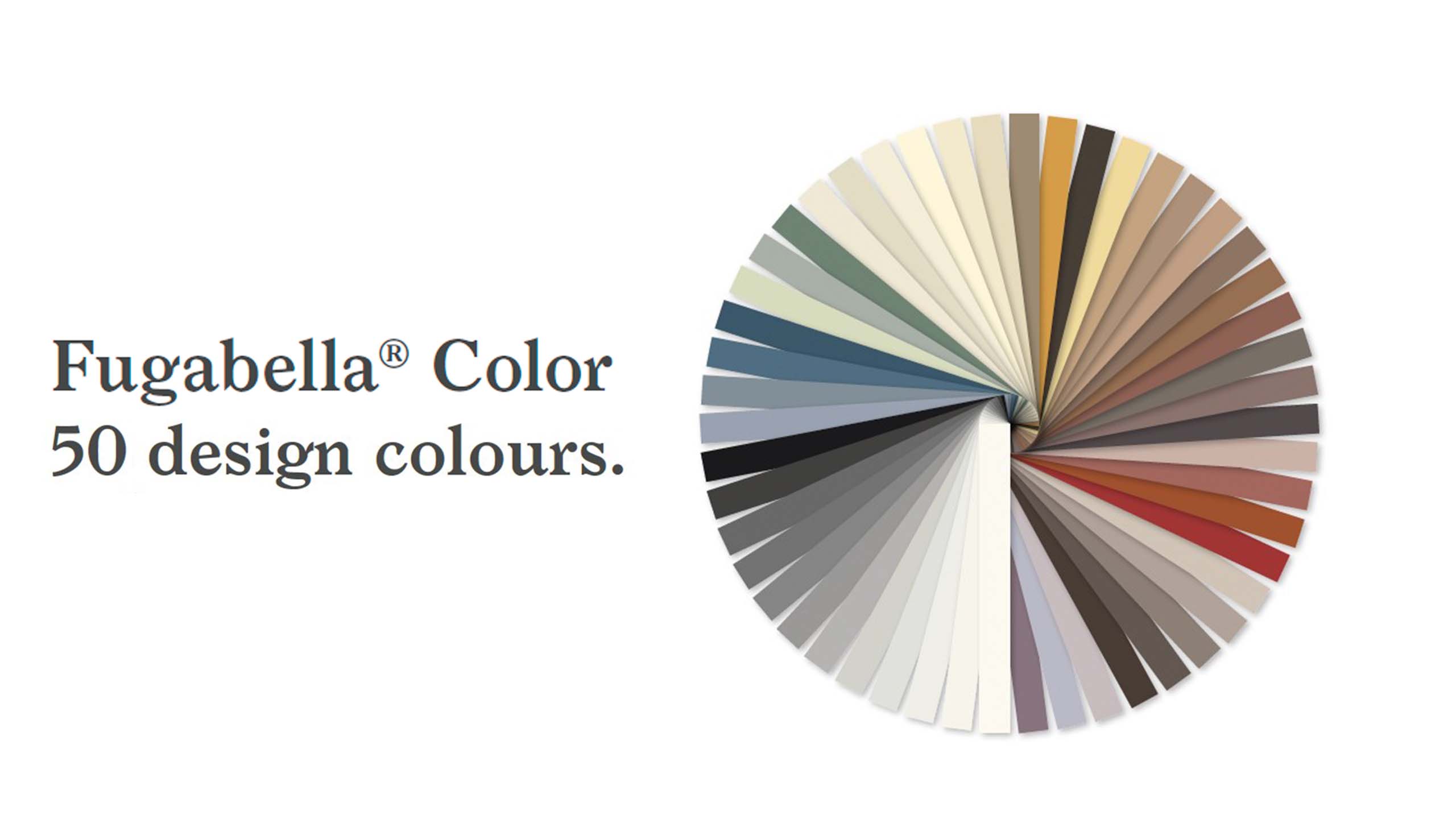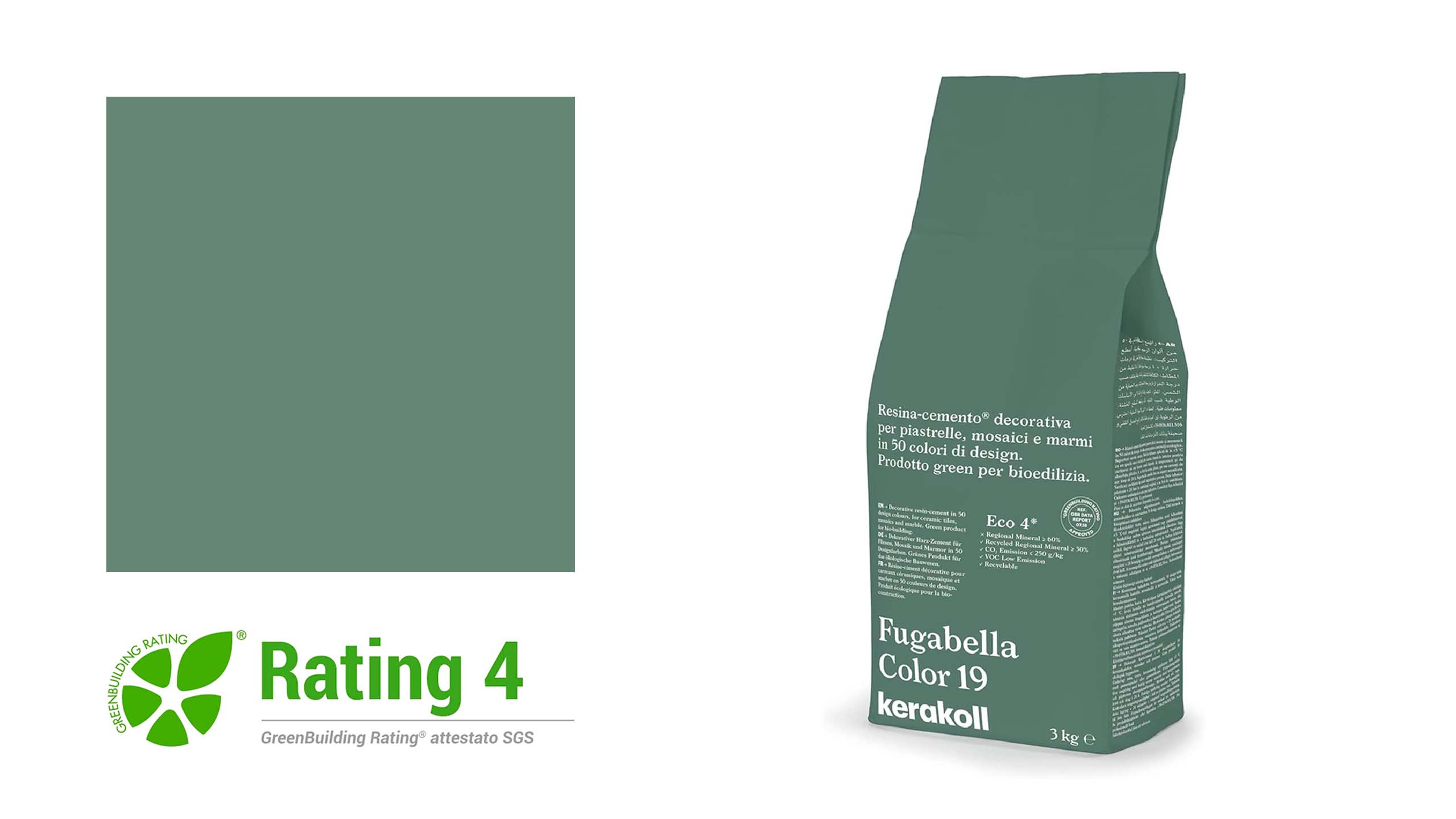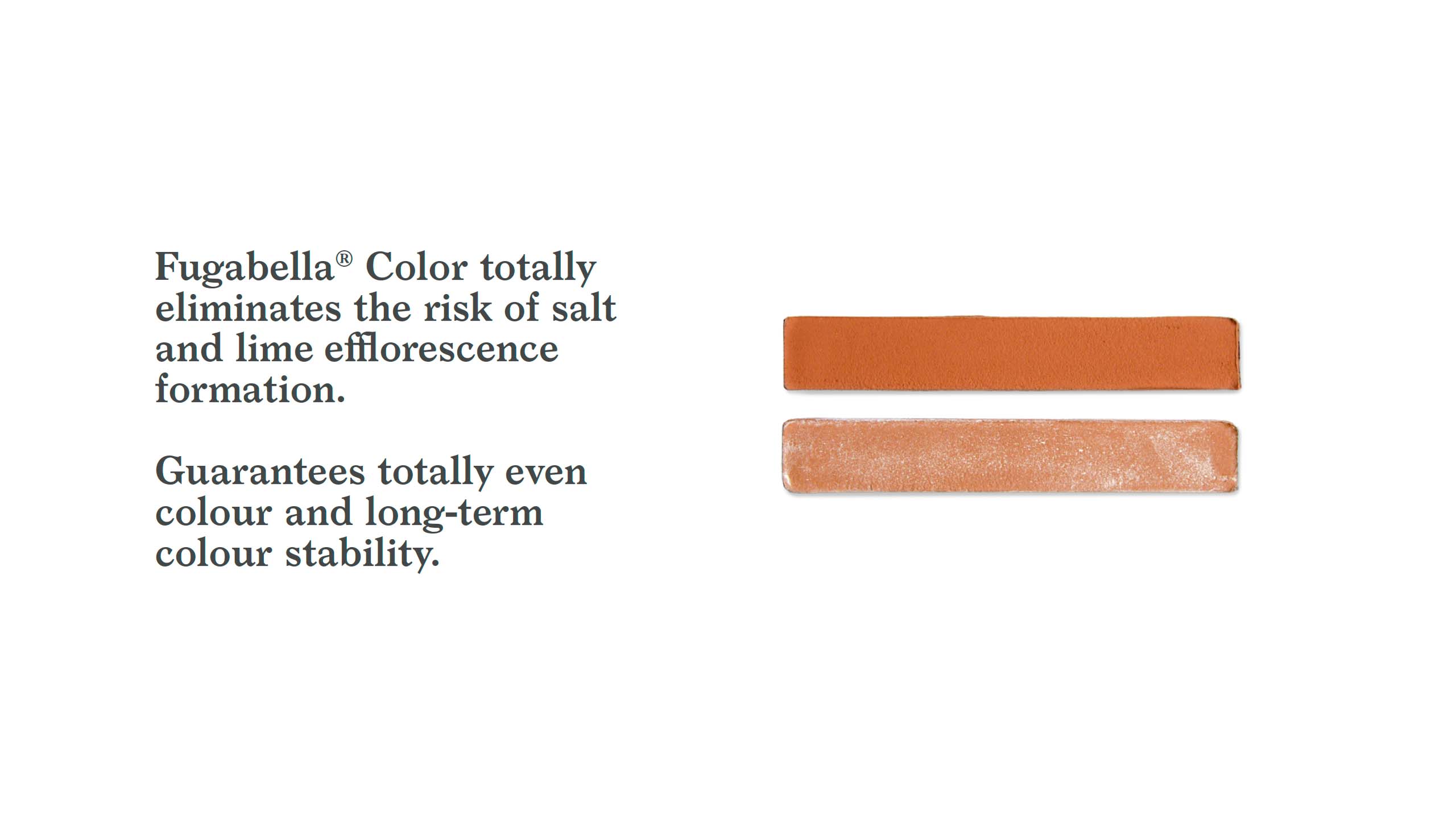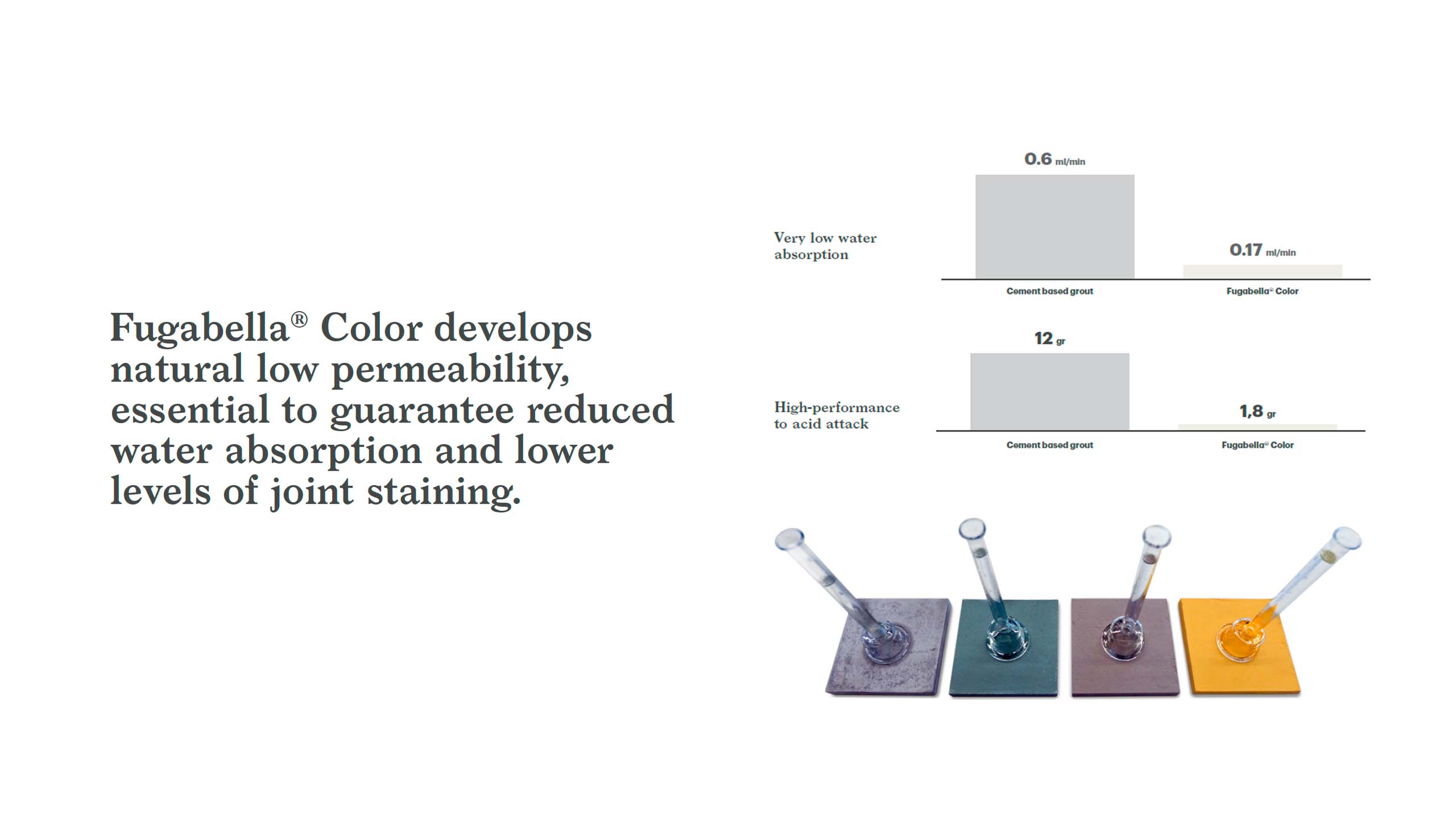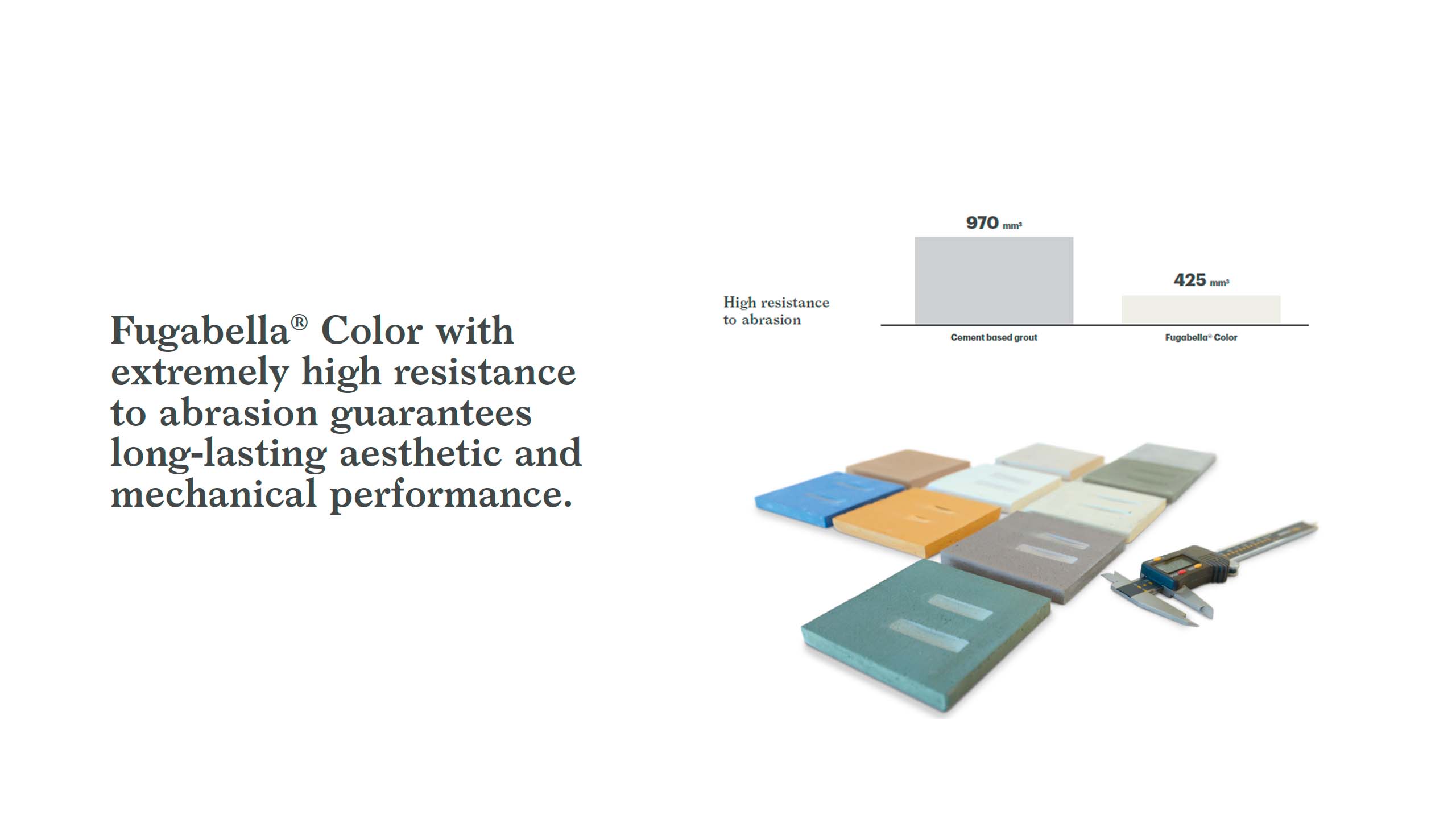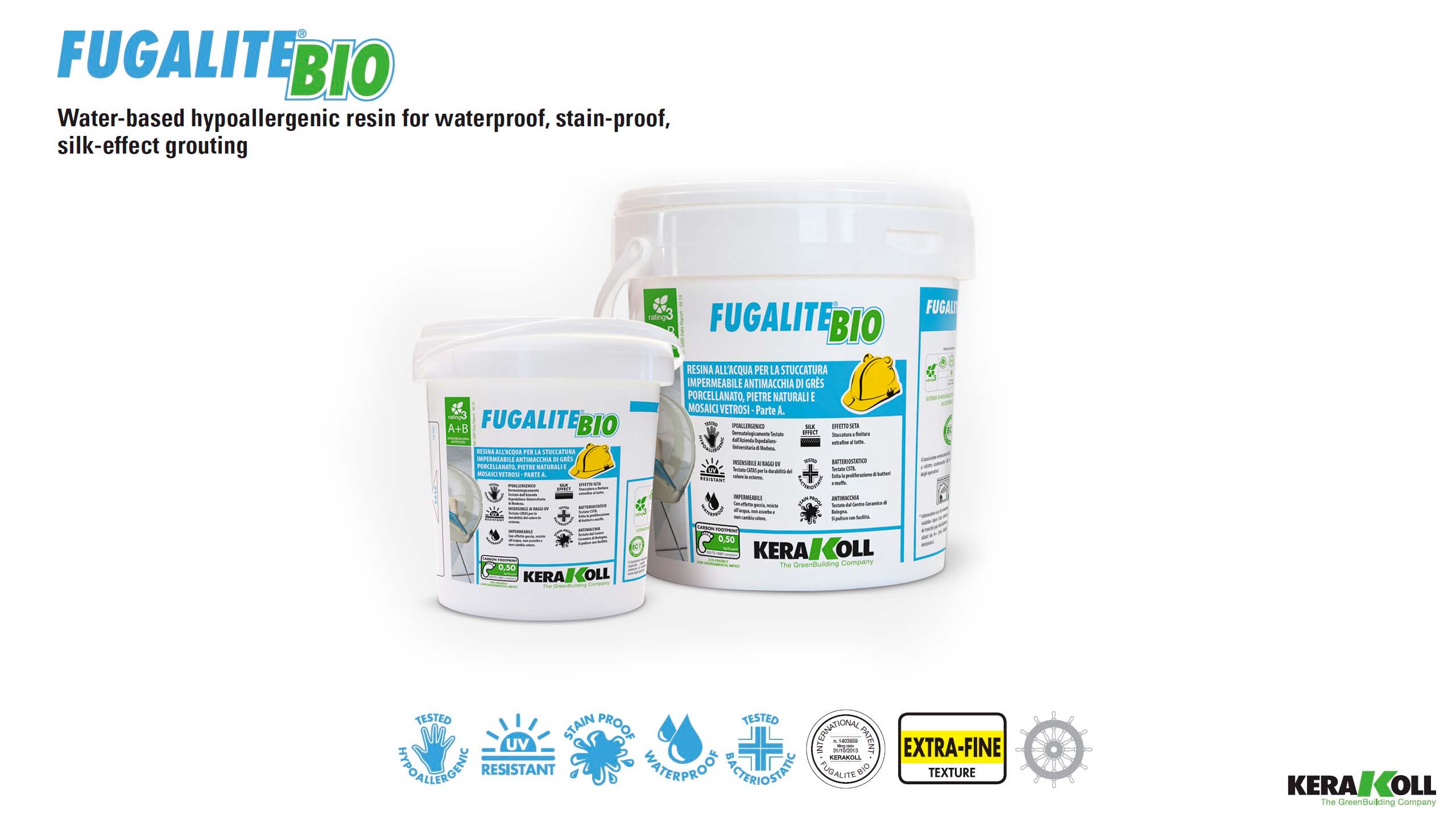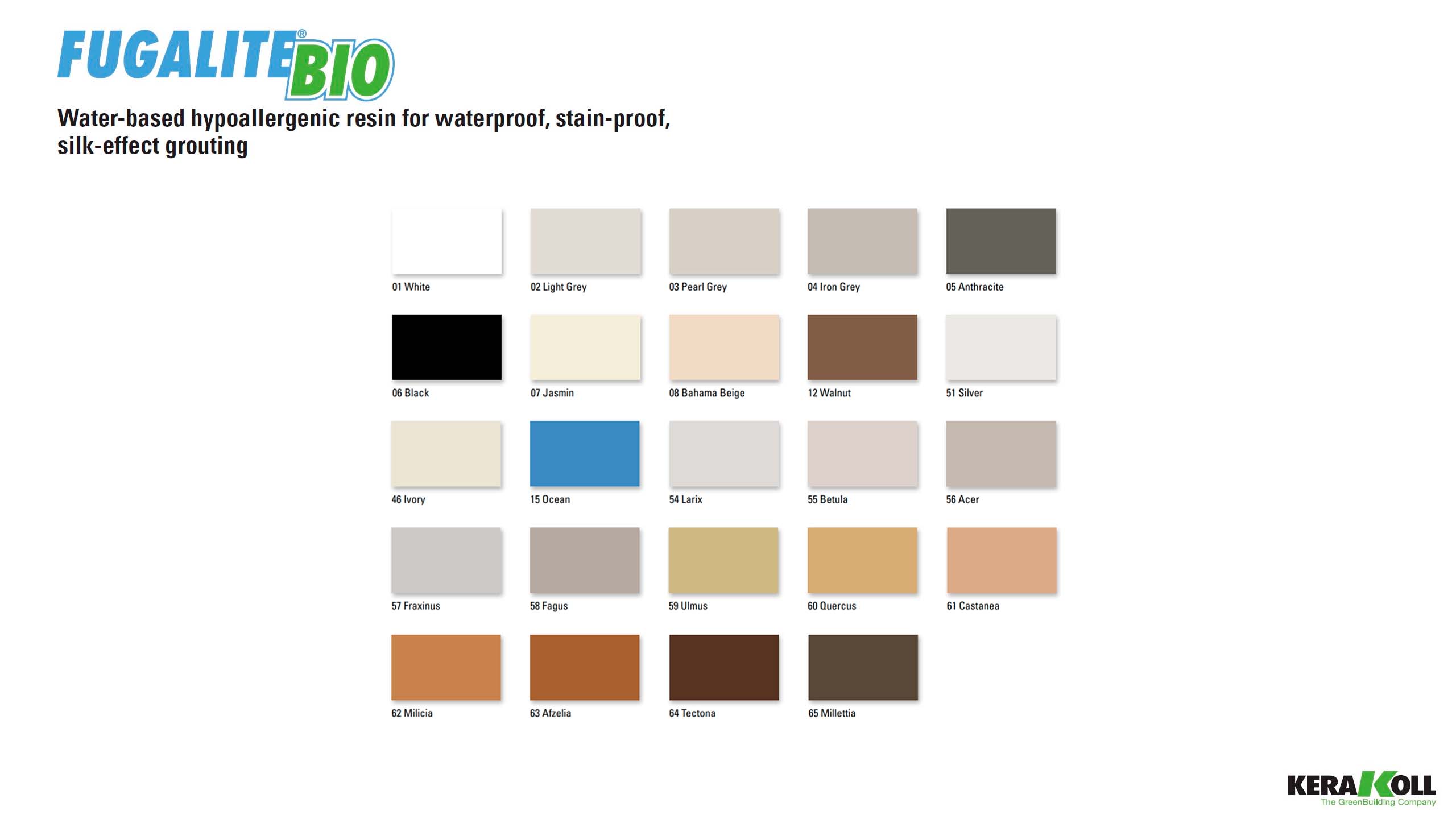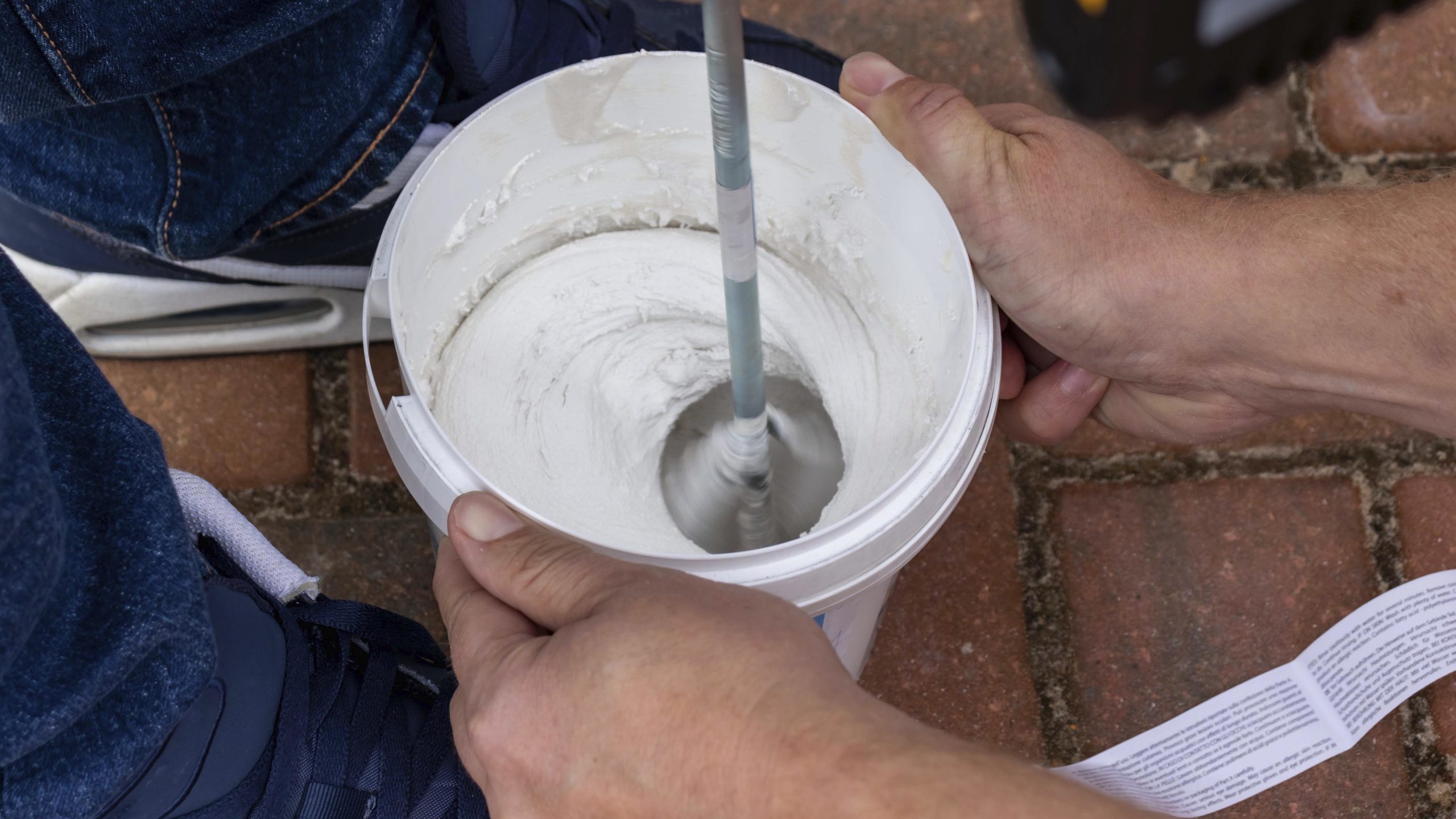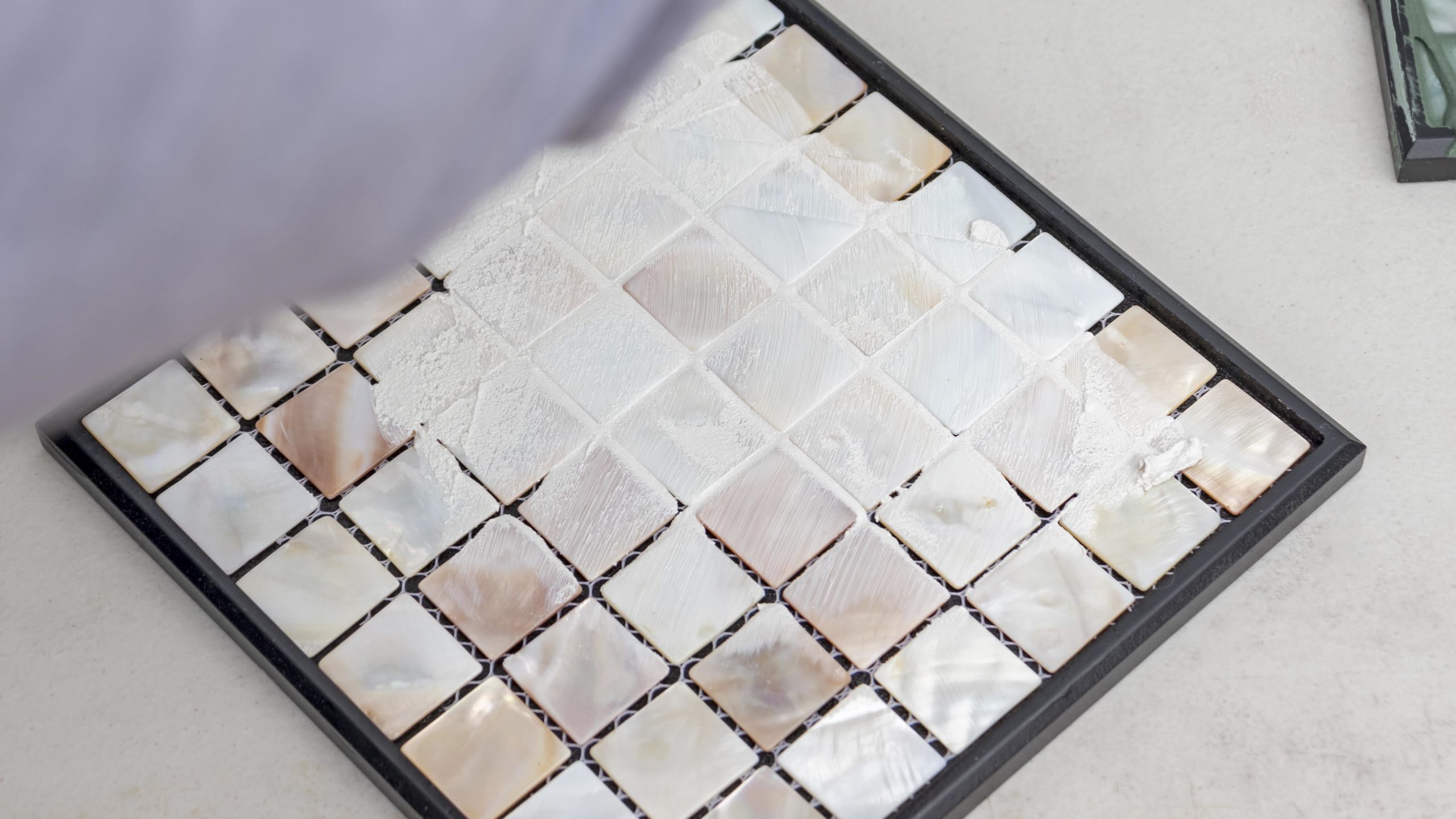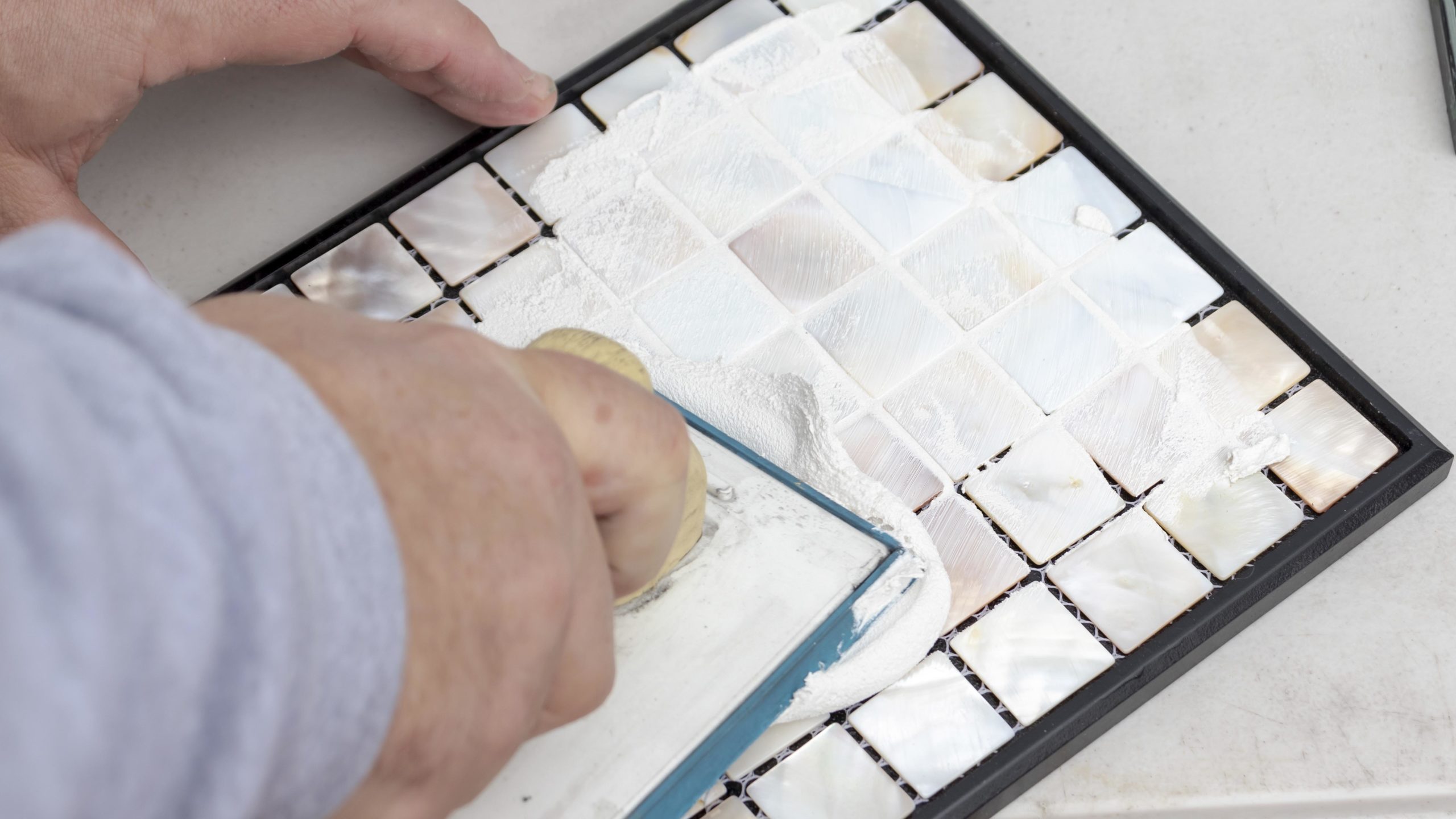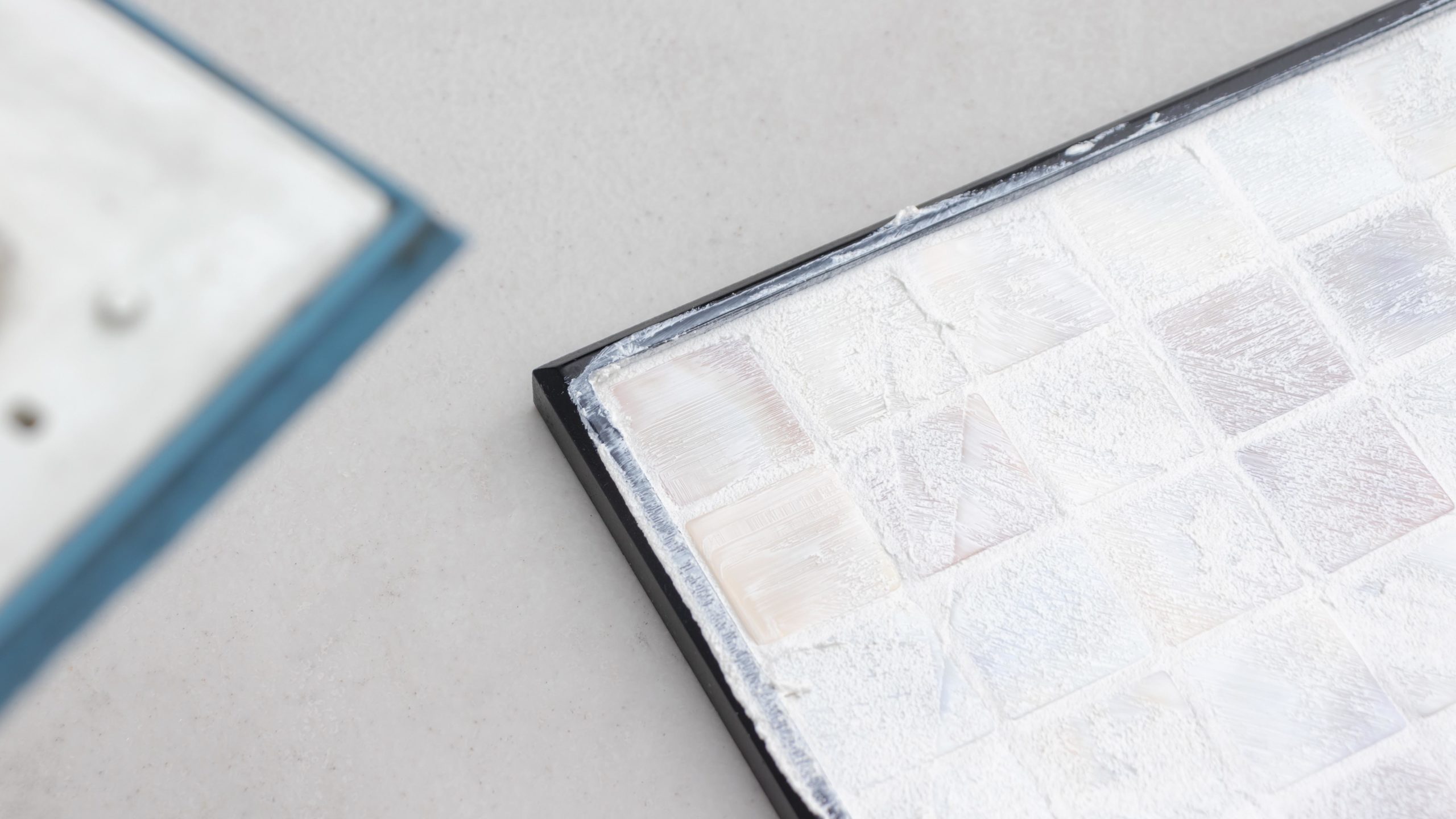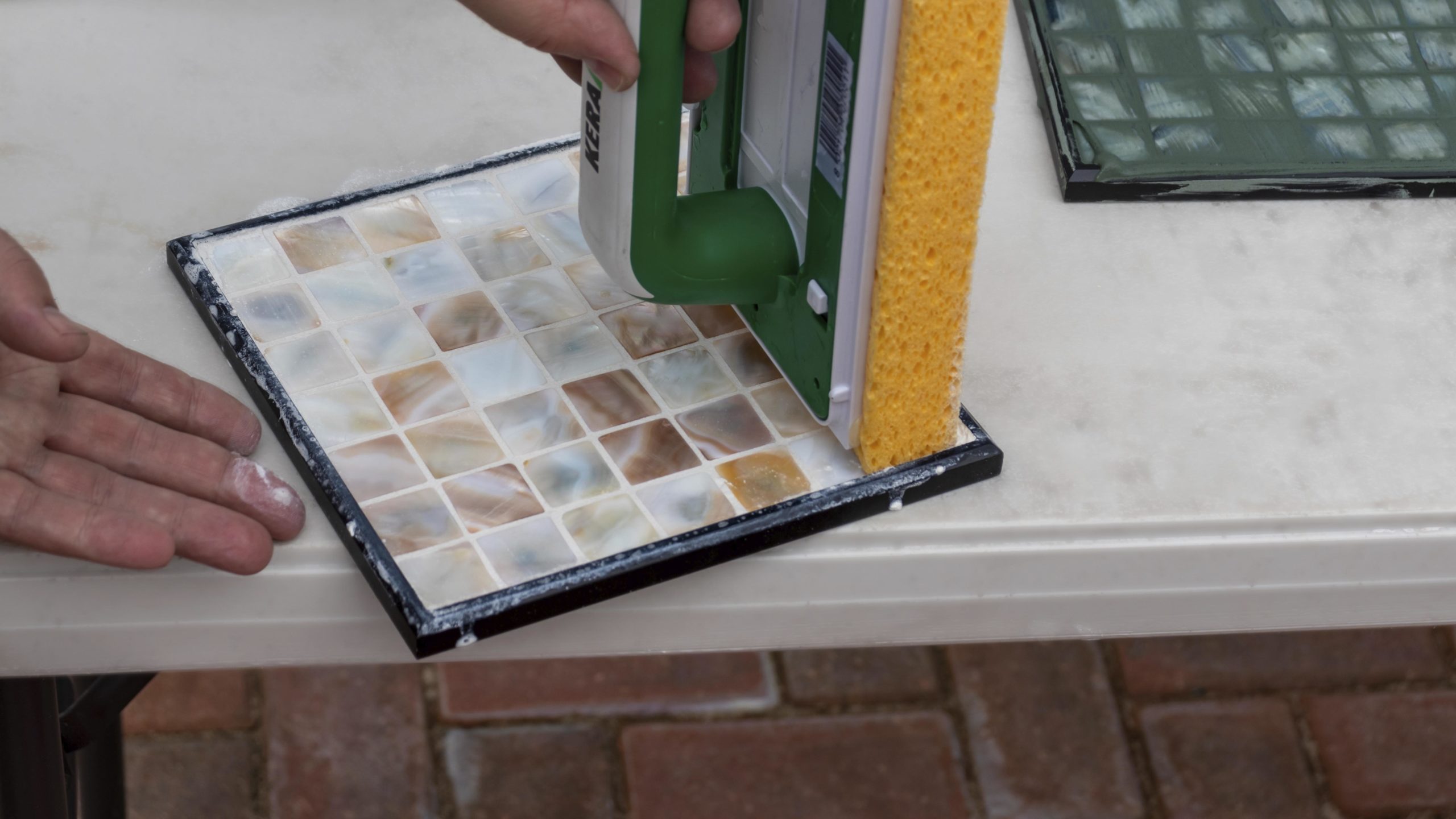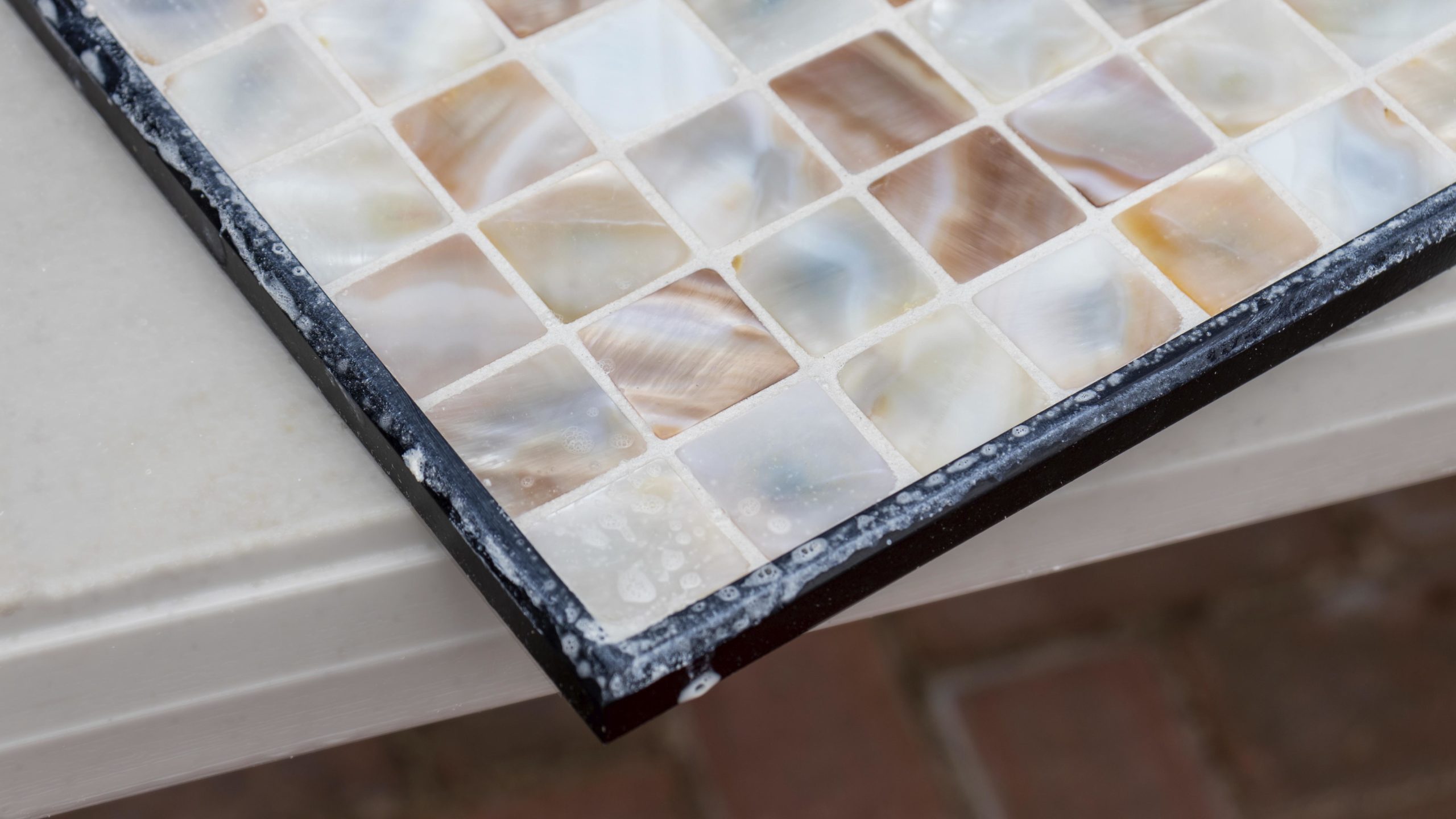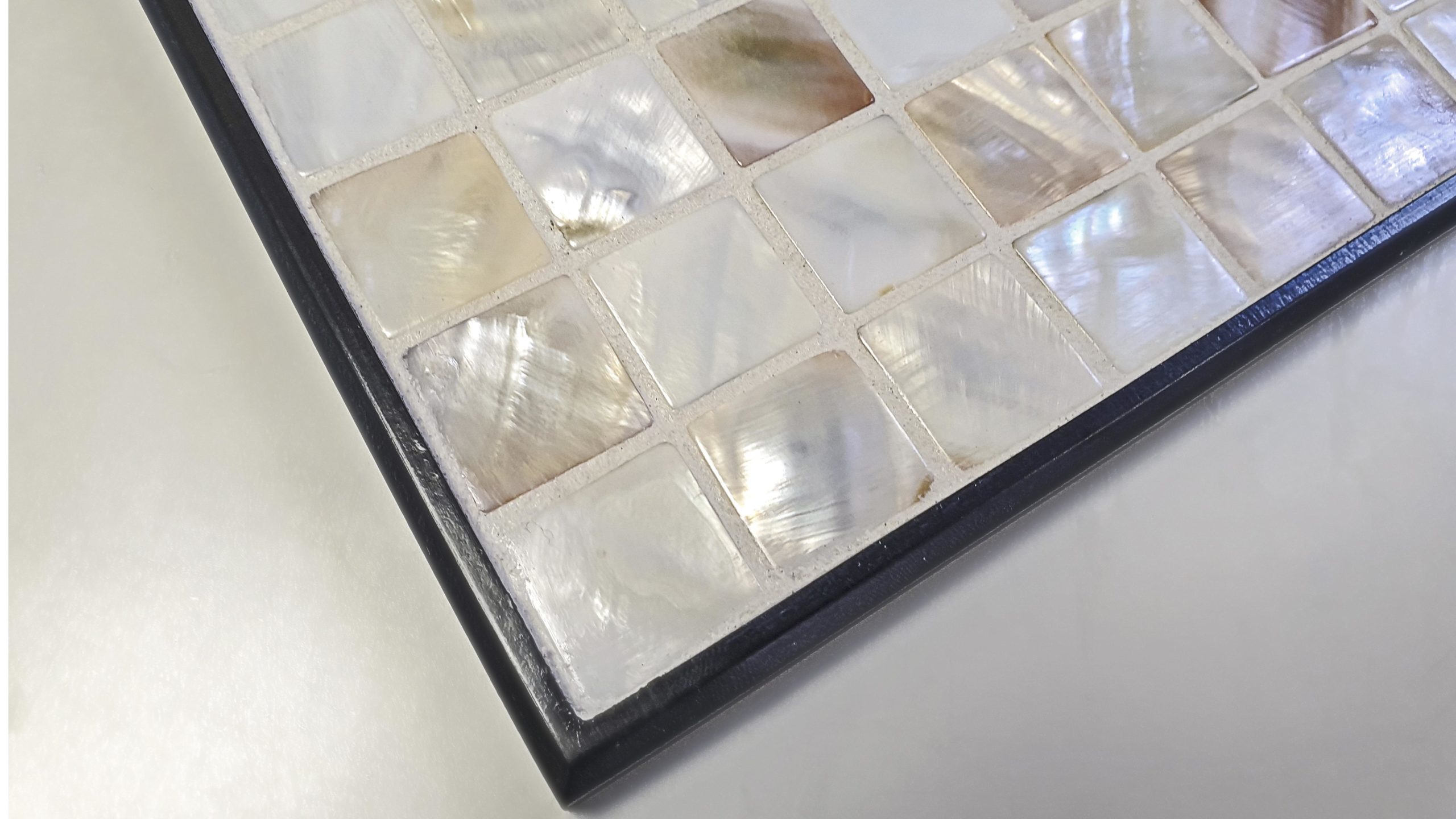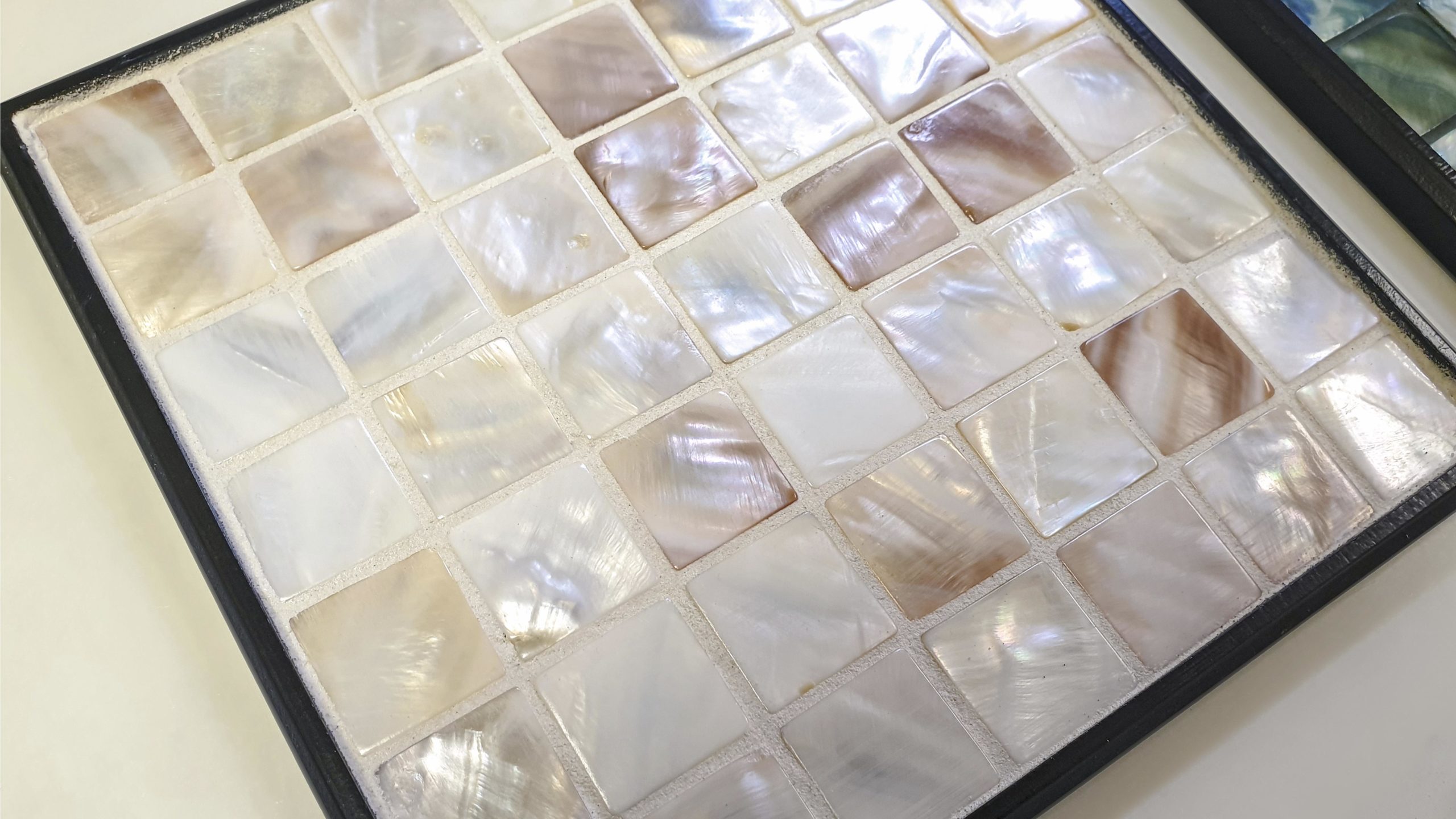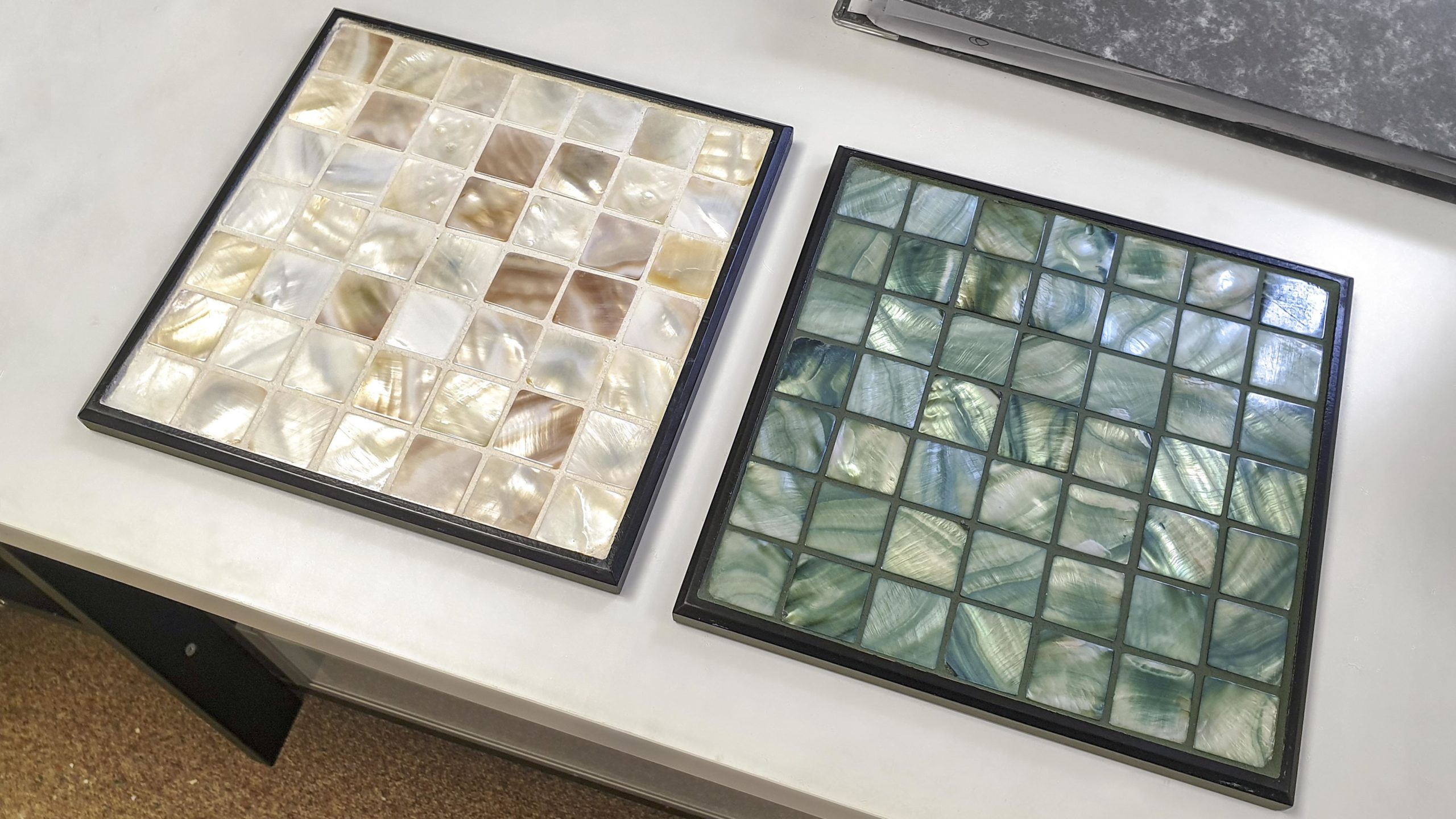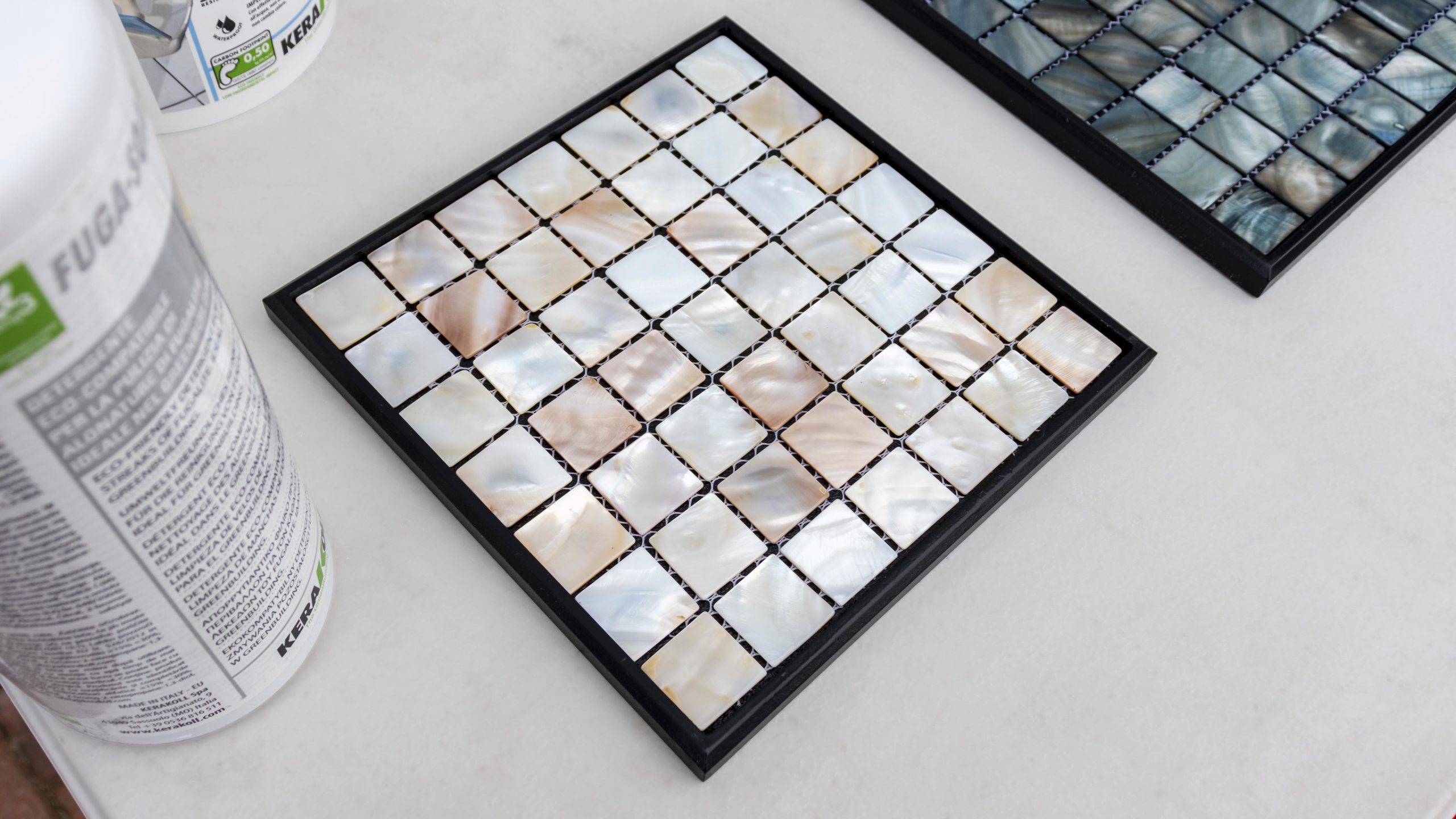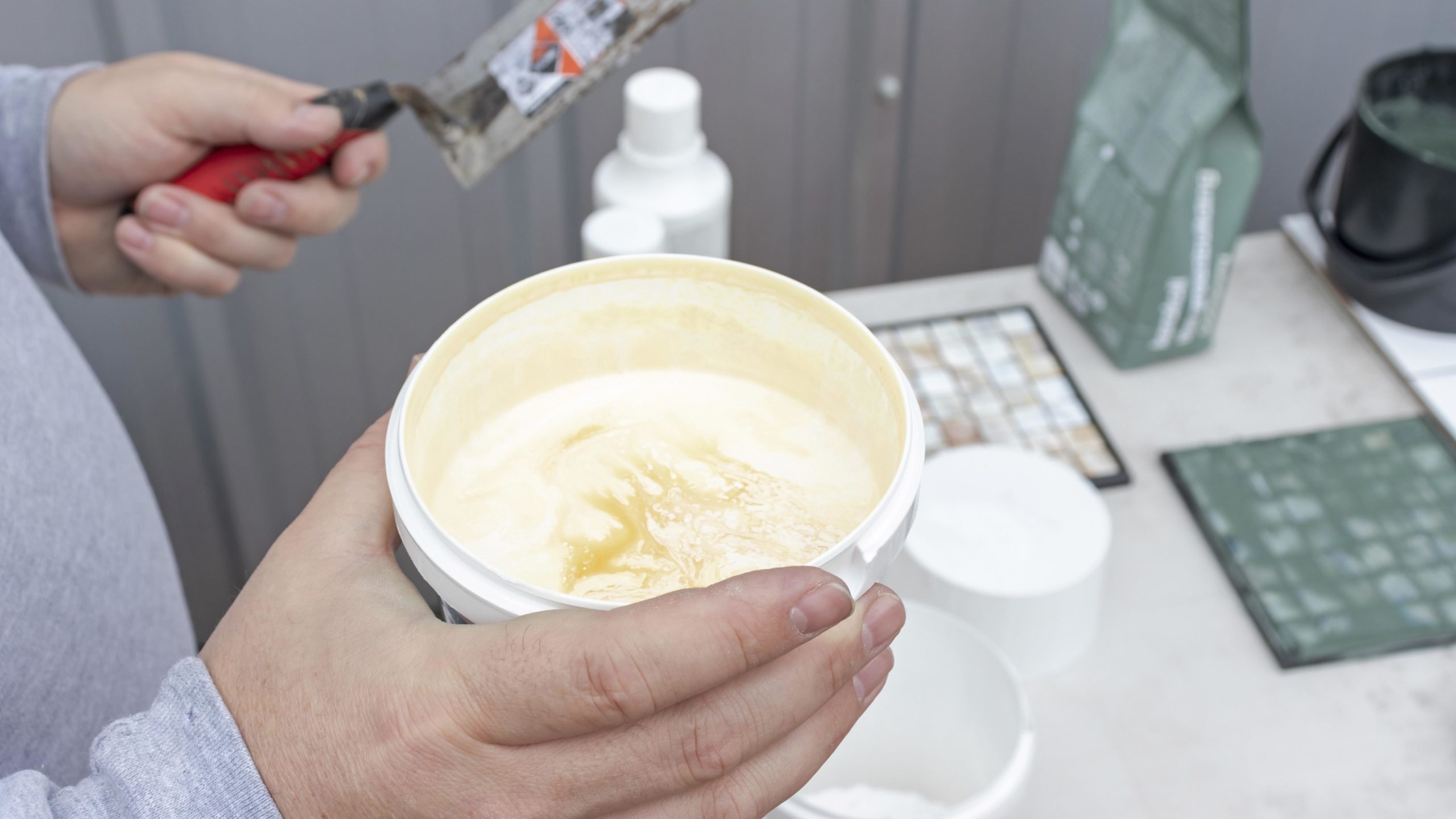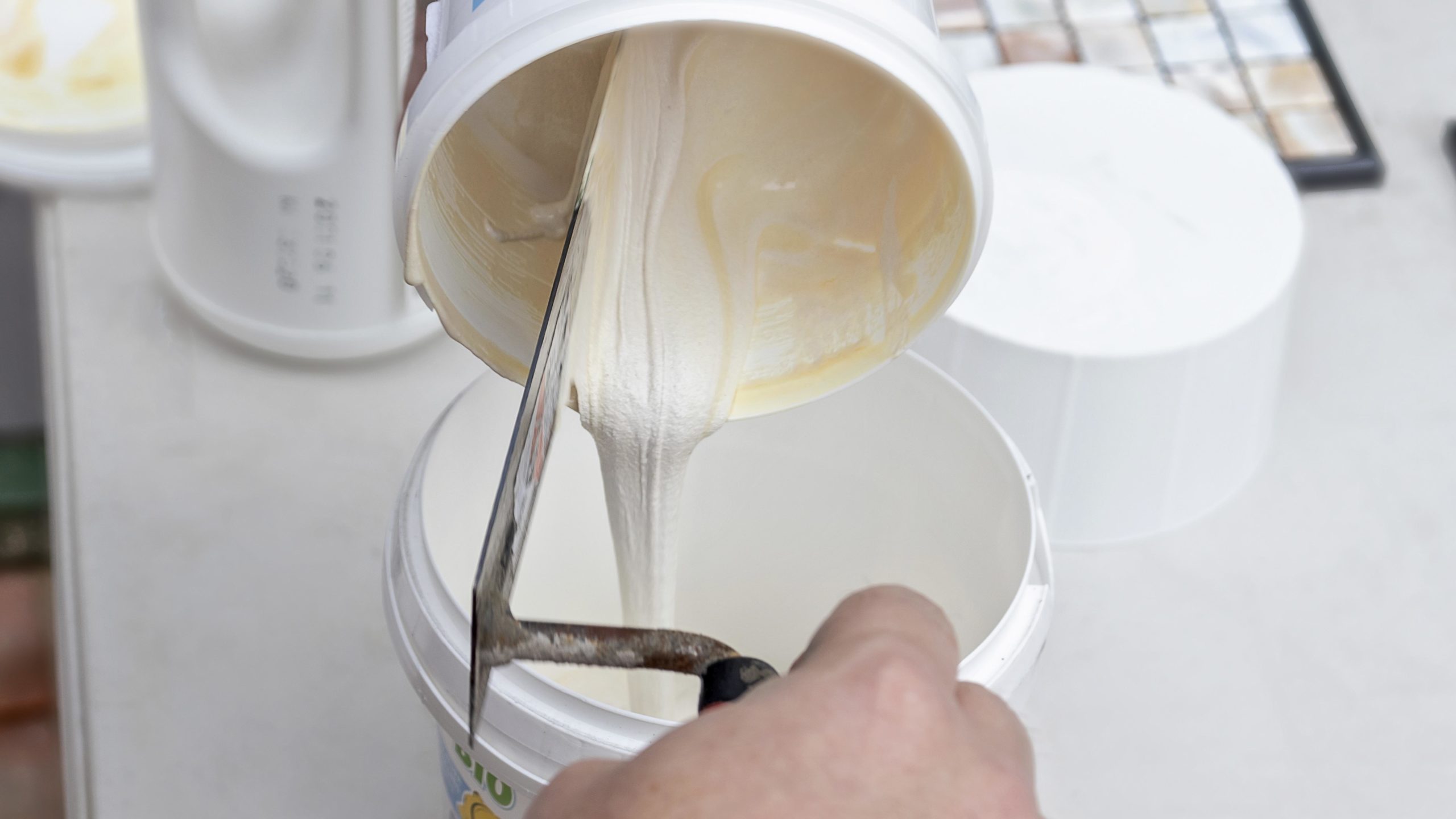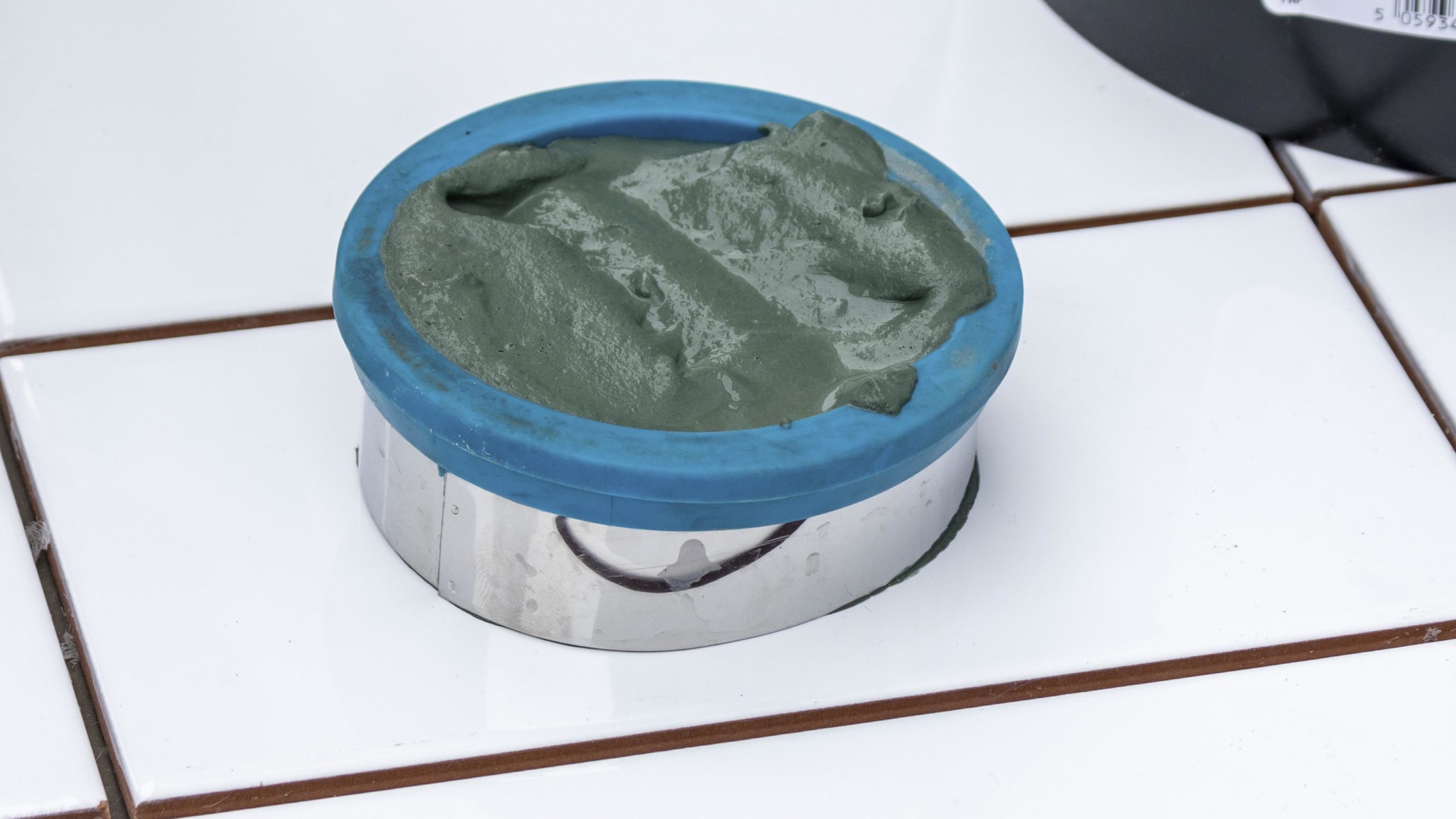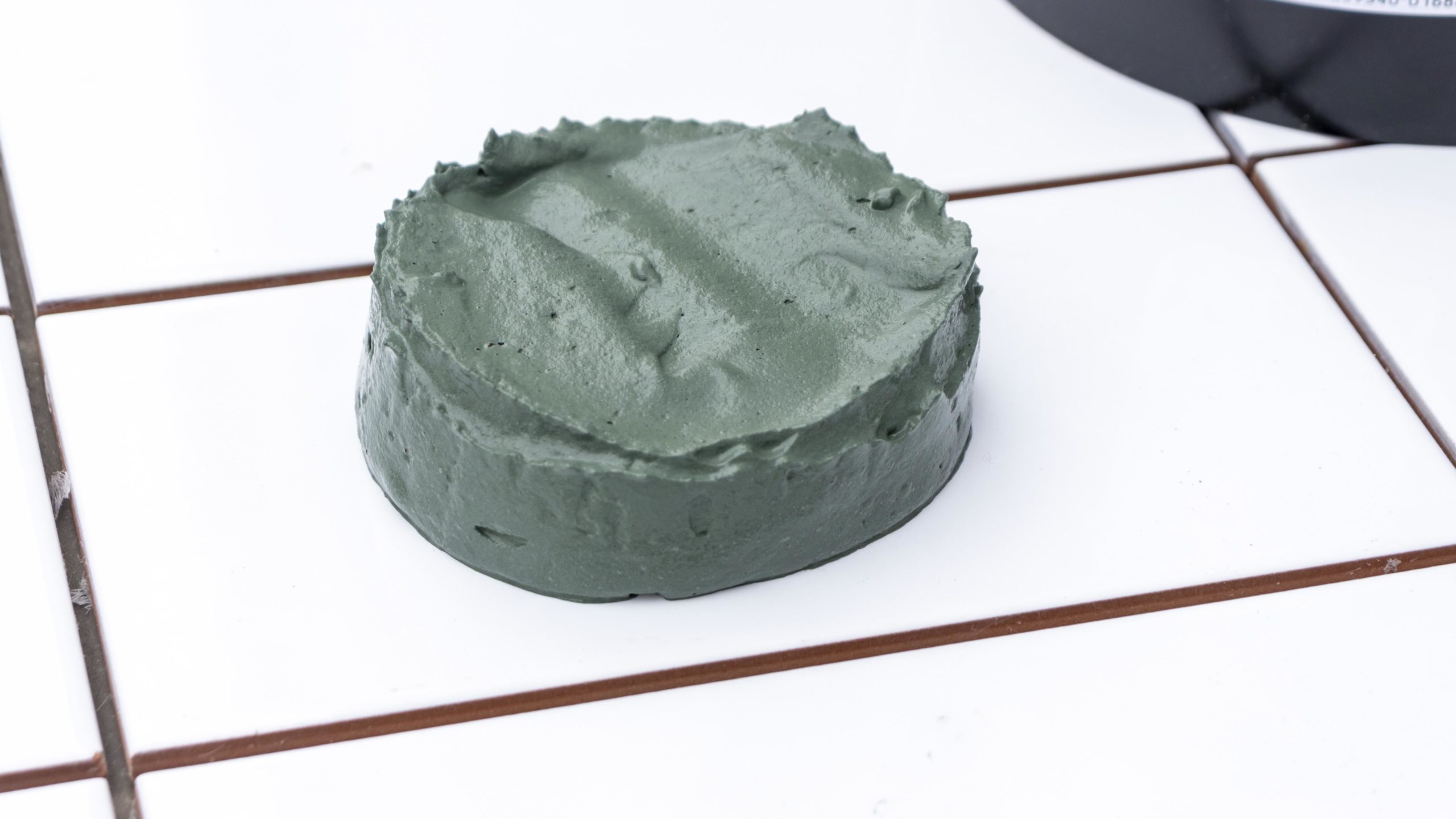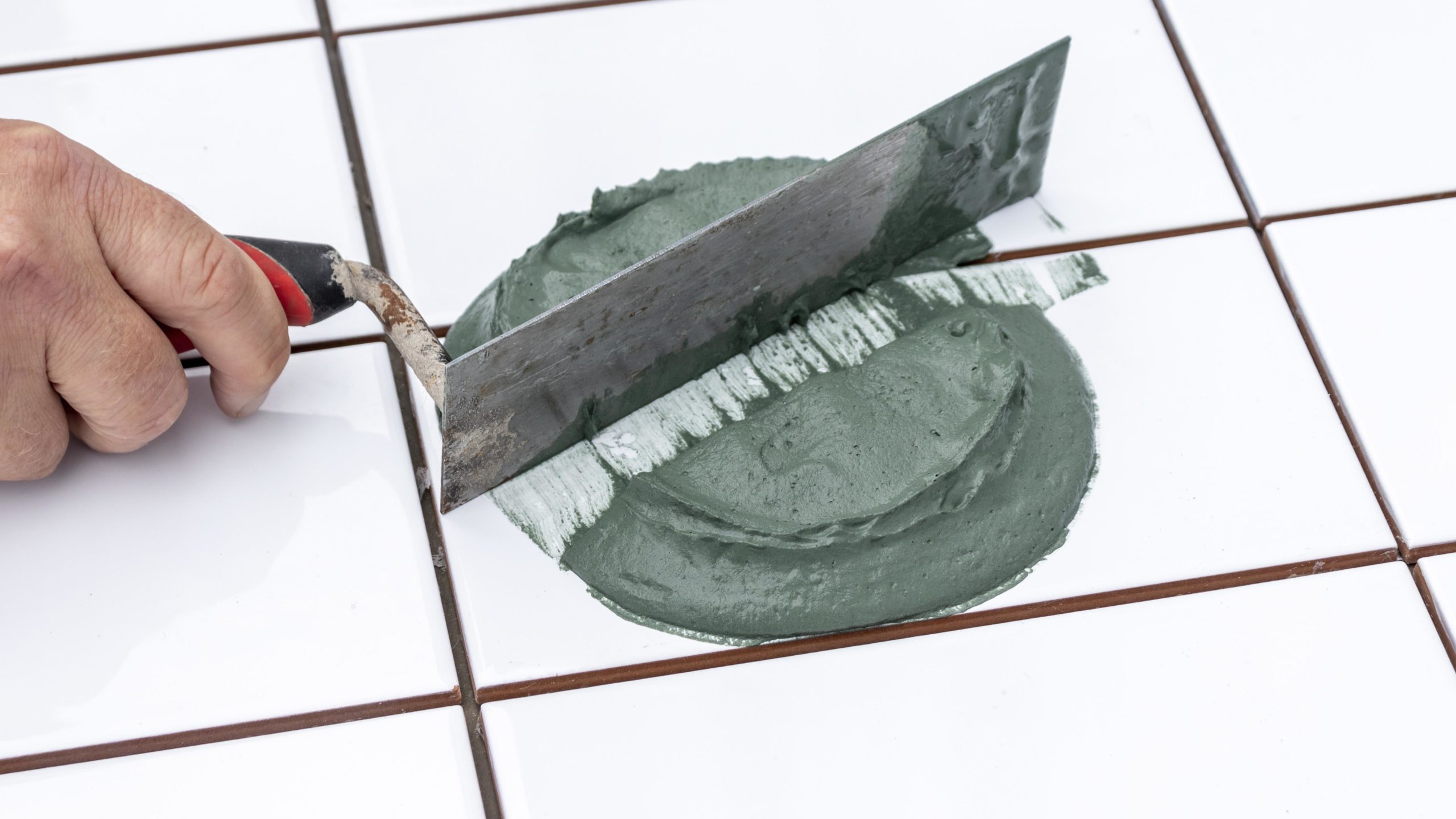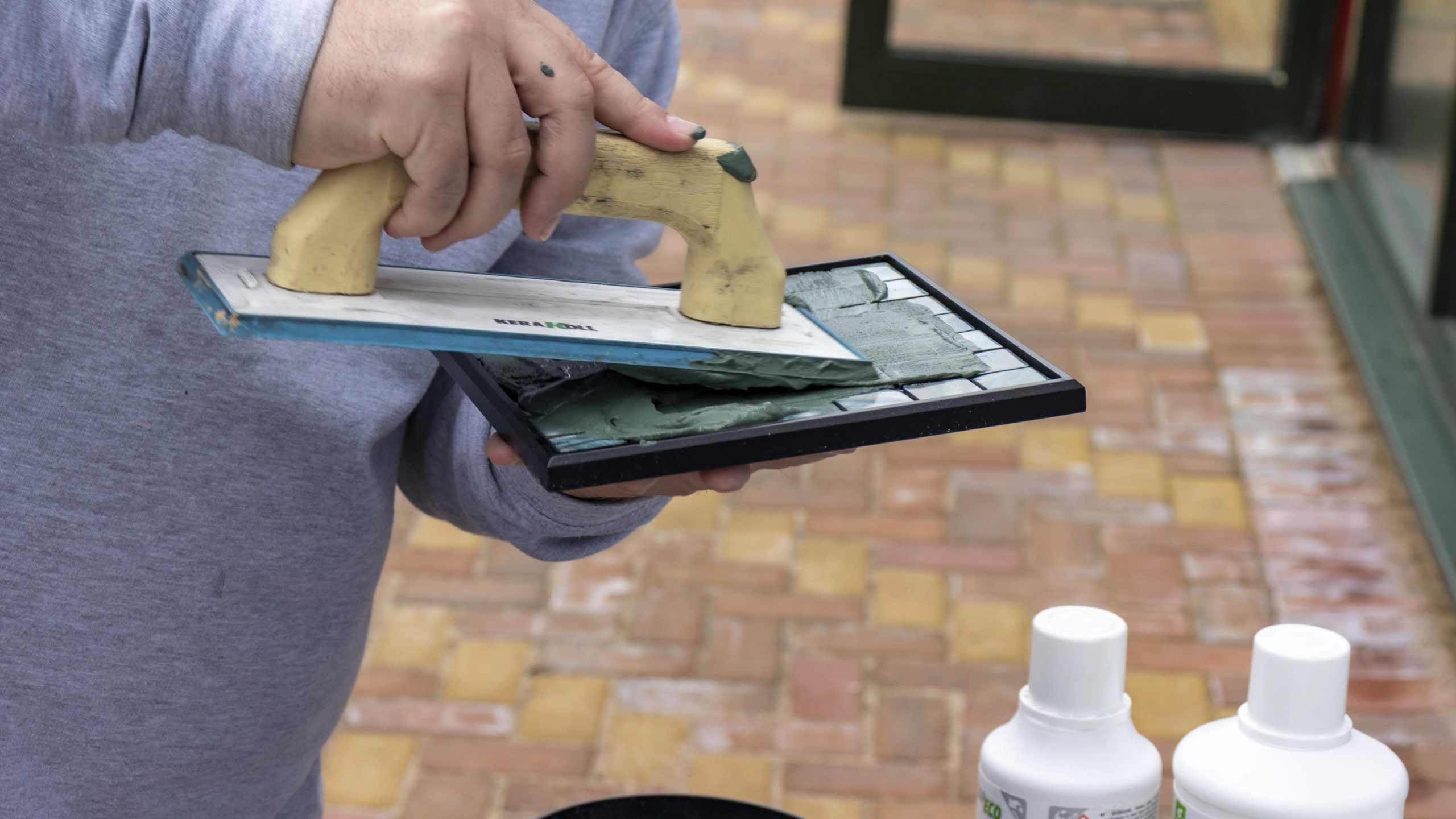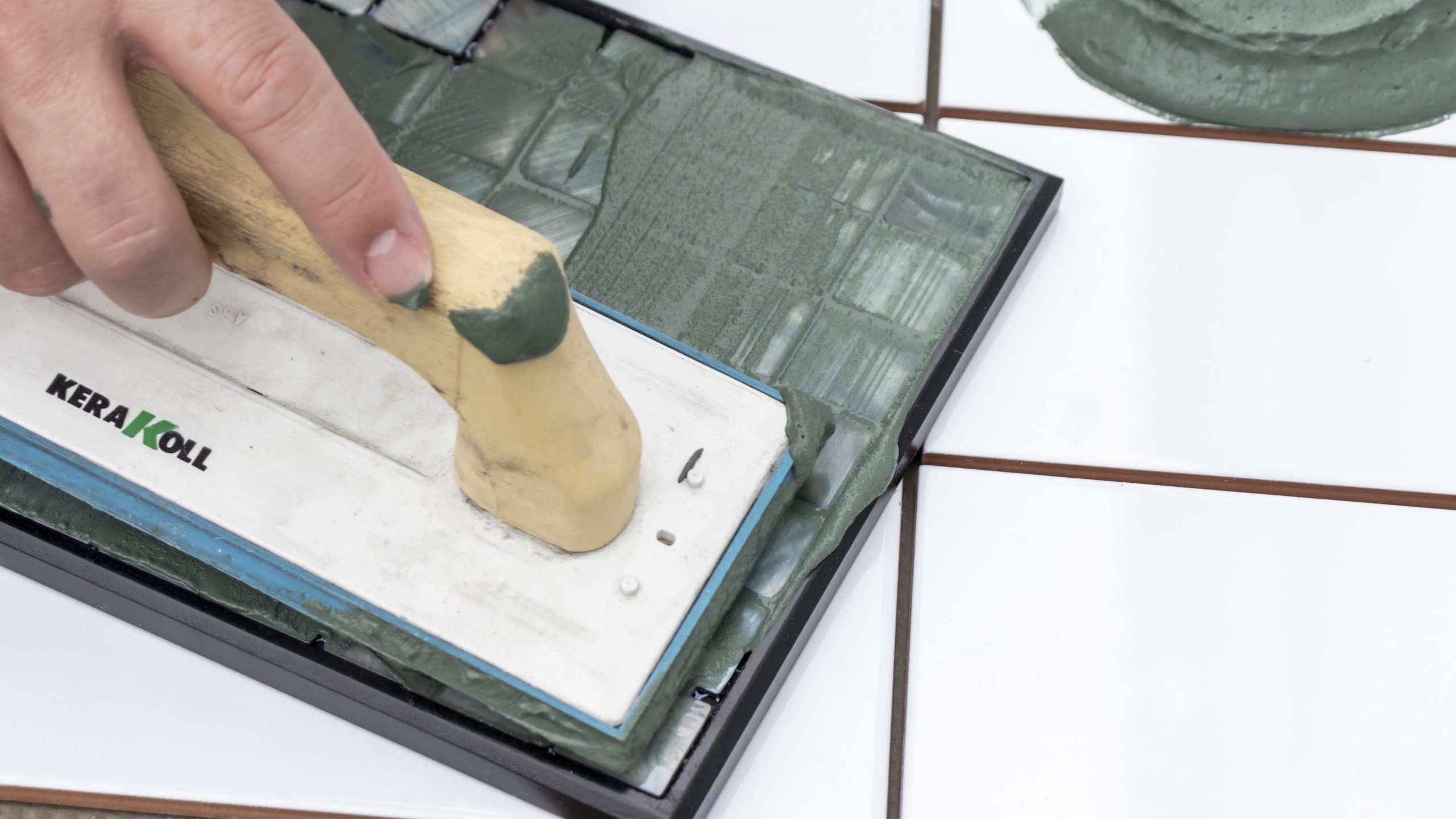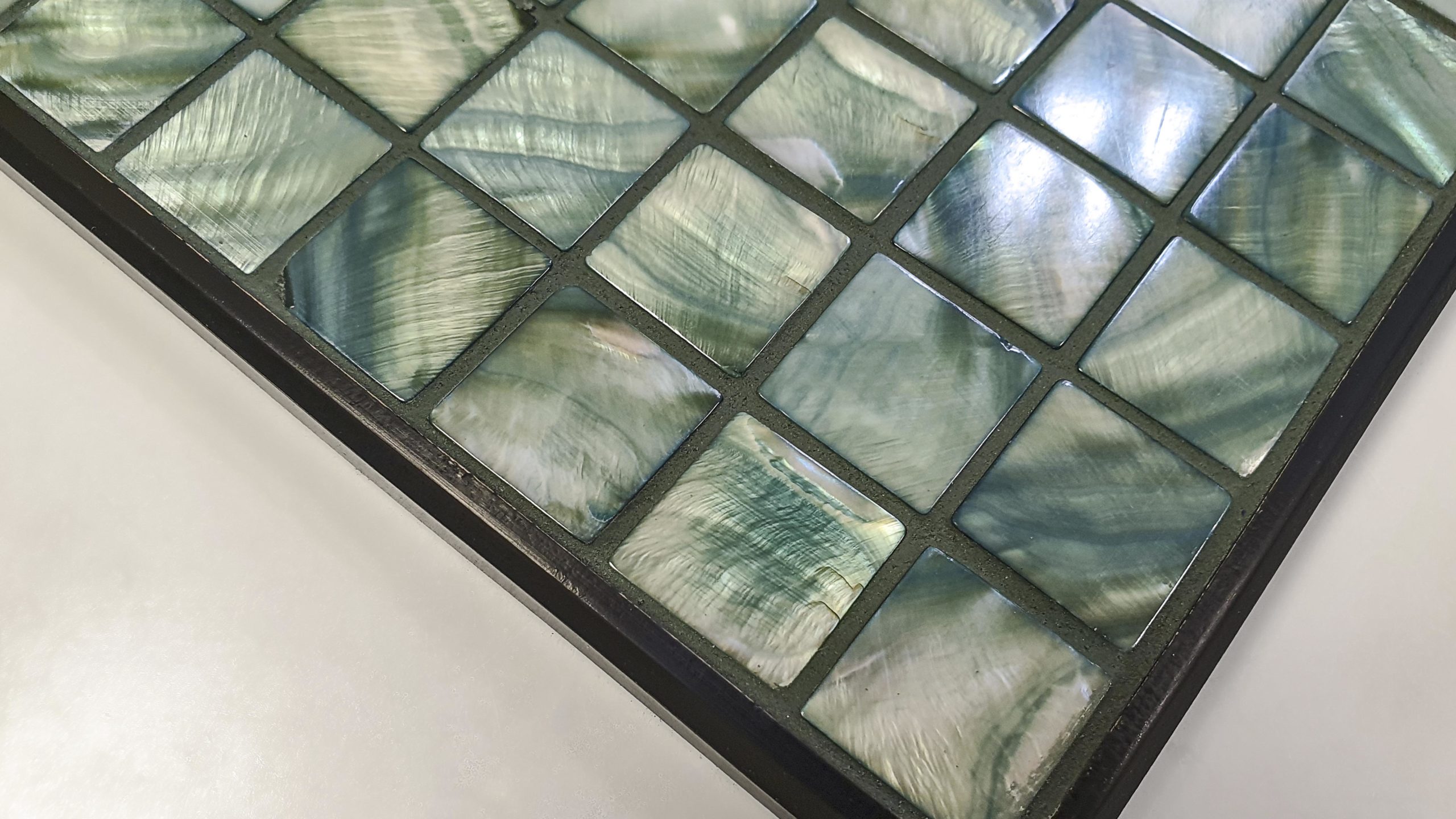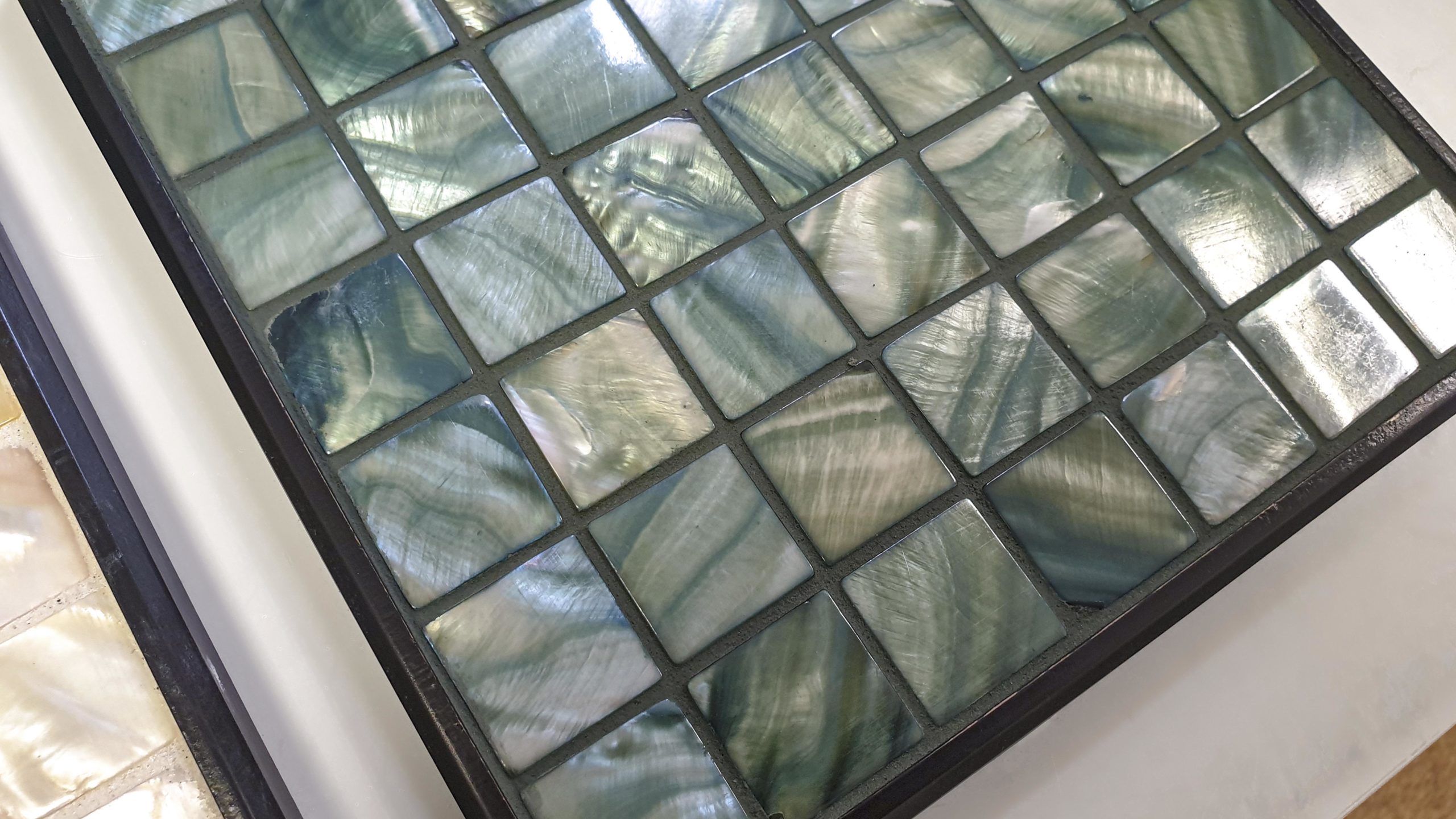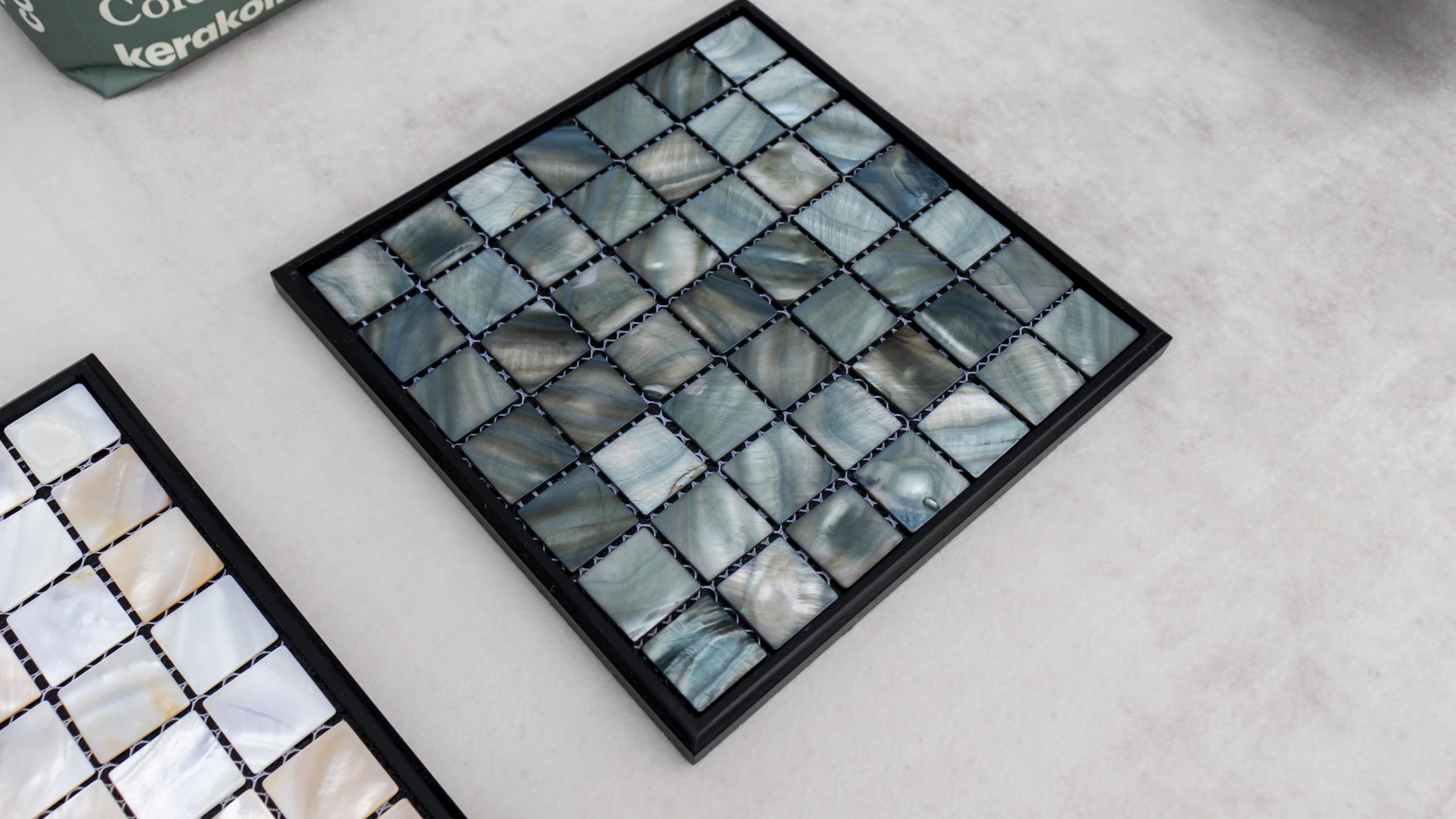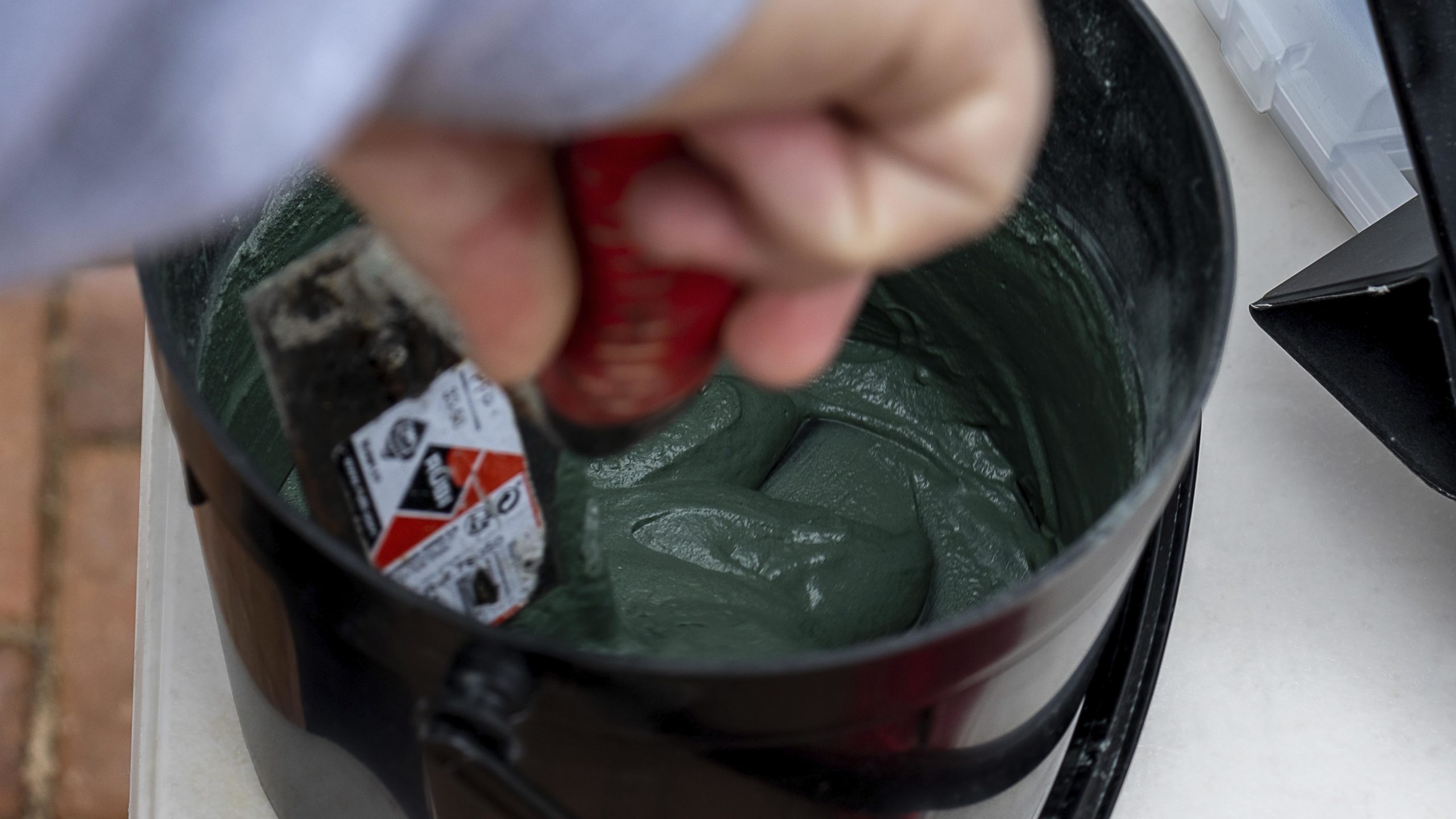Grout: which type should I use?
Introduction
Last year the team met with Kerakoll to discuss their range of environmentally conscious adhesives and grouts. Regular training sessions like these are essential to ensuring the team are armed with the most up to date knowledge for our clients to receive the best advice possible. As part of the training session, the team were shown the positives and negatives of traditional cementitious and epoxy grout and how these then compare to Kerakolls offering. Then we were given a demonstration of Kerakoll Fugalite Bio (Epoxy) and Fugabella Color (resin‑cement) to showcase the differences and learn the application process.
Standard grout options
In the vast majority of domestic projects, a cement-based grout is utilised. This is because cement-based grouts are more easily accessible and are easier to work with. Cementitious grout is made using a cement powdered mix to which you add water. The mixes come in both sanded and unsanded versions depending on the size of the gaps between the tiles. Course sanded grouts are not recommended for use with our mother of pearl mosaics. This is because the sharp sand in the mixture can cause scratches and markings to the mosaic. There are several additional disadvantages to using cementitious grouts, they are not waterproof so will absorb water and can stain and the porous nature also makes the cementitious grouts more prone to bacterial build-up and the formation of mould. General attention and maintenance may be necessary with cementitious grouts to keep them looking good for a long time. These additional maintenance steps not only take time but the use of harsh chemicals over time will damage your mosaics.
The standard alternative to a cementitious grout is epoxy grout. Epoxy grout will arrive in two parts, a resin and filler powder which you mix and then apply in the limited timeframe provided by the manufacturer. The greatest advantage of using epoxy grout is that it is waterproof. They are resin-based and once cured are impervious, so nothing can penetrate and stain. They will still get surface dirt but they can be cleaned easily and the grout will stay the same colour forever, even under UV light. Kerakoll offers two types of epoxy grout Fugalite and Fugalite Bio.
Kerakoll’s Fugalite Bio is a environmentally friendly epoxy grout, hypoallergenic making it safe for users with allergies; it is bacteriostatic and fungistatic, so mould and bacteria can not grow; it is also UV resistant and can be used safely inside and outside. Fugalite Bio also produces extremely low VOC (volatile organic compounds) emissions, making it safe for the user and the homeowner as it doesn’t emit any harmful emissions. The bio variant is available in 24 natural shades which have an even distribution of colour, unlike other grouts which can appear patchy. Fugalite Bio is a marine rated product suitable for the most demanding areas.
The standard Fugalite also has the benefit of being antibacterial, antifungal and UV resistance but is not hypoallergenic. Fugalite comes in 28 colours you can choose from to find the best match for your project. Fugalite also has an even distribution of colour like Fugalite bio. Fugalite also shares Fugalite Bio’s low VOC credentials for safe working environments and is safe for clients. As a final plus point, you cannot get efflorescence using Fugalite.
These characteristics make the Fugalite range a perfect choice for faster, cleaner and safer installations, it makes the trader’s job easier, it is the safer option for the customer and looks fantastic with its range of consistent colour choices.
Cementitious grouts and epoxy grouts have been the main two grouts on the market for interior designers, the tile industry and customers for a while. However, advancements in technology now mean there are more advanced solutions available as we will explore next.
The hybrid grout solution
The Kerakoll Fugabella Color (epoxy resin cement) is a new generation hybrid grout that sits between a cementitious grout and the epoxy. There is an impressive range of 50 colours and there are matching silicones. being able to match sealants and grouts make it a great choice for any tiled floor or wall, Fugabella is extremely versatile and a perfect grout for all aesthetics. The Fugabella prides itself on the fact that it is extremely easy to clean, with new performances in resistance to abrasion and durability. It is water repellent, naturally antibacterial and resistant to stains making it a very close alternative to the Fugalite epoxy.
The main Usp’s for Fugabella Color are that it provides a pure and natural bonding system with low VOC’s. There is an environmentally friendly organic matrix of 50 colours used exclusively by Kerakoll and designed by Piero Lissoni. The colours are created using organic natural pigments instead of using synthetic methods of adding colour. The full deep luminous pallet of colours guarantees total and even colour coverage with long term colour stability. There are no impurities within Fugabella Color which is a guarantee that you cannot get salt or lime Efflorescence to build upon the grout. By combining epoxy and cementitious properties Fugabella has a guaranteed reduced water absorption rate and lower levels of joint staining. The easy to work product will produce full and smooth joints as seen in the step by step images further down. Finally, Fugabella possesses extremely high levels of abrasion resistance, is antibacterial, eco friendly, and can be recycled as an inert material.
The full solution; matching silicone colours
Kerakoll offers a full solution for those with the highest attention to detail. Kerakoll’s ‘Silicone Color‘ comes in 50 colours to match the Fugabella Color grout colours. They possess anti-mould properties for use with tiles and mosaics in highly demanding settings. It is a perfect product for an environmentally conscious building. Kerakoll’s Silicone Color is extremely strong with long workability to non-absorbent surfaces, ideally suited for use in swimming pools and other wet environments. Much like Fugabella Color, the matching silicons have high colour stability ensuring consistent colour throughout the product. If you require the use of silicone in cold environments then Kerakolls matching sealants are an ideal choice as they are resistant to freezing. The silicone has a strong structure too, making it an ideal choice for swimming pools and areas in permanent contact with water.
Another silicone option from Kerakoll is ‘Neutro Color‘.An anti-mould decorative silicone for facades and natural stones, it comes in 12 designer colours and is an environmentally friendly product for bio building. Neutro Color guarantees a perfect seal with no staining on the delicate natural stones and marbles. This sealant is also suitable for cement-based products and porous material surfaces. Low VOC emissions ensure a healthy workspace for installers and an instantly usable space that does not require aeration before being used.
The Kerakoll demonstration
The below images are of Kerakoll’s practical demonstration of Fugabella Color and their Fugalite Bio. The application process for both products is the same. The only difference is the initial preparation of the grout.
- Fugabella Color is prepared by mixing the powdered solution (consisting of both resin & cement) with water to activate. Fugalite Bio however is a two-part solution consisting of a powder and an activator, these have to be thoroughly mixed.
- Once thoroughly mixed the grout has a velvety consistency with an even distribution of colour for both products.
- Grout is then applied using a trowel pressing into all of the gaps being sure to work quickly in particular with Fugalite before the epoxy cures.
- Clean using a cellulose sponge and water or Kerakoll’s Fuga-Wash Eco cleaning solutions can be used for an improved clean.
- The grout then needs to be left to set.
Kerakoll Fugalite Bio epoxy grout application
Kerakoll Fugabella (resin-cement) application
Summary
So which grout type should you use? When installing Siminetti’s Mother of Pearl mosaics we highly recommend using Fugabella Color in the first instance due to the fantastic range of colours, excellent performance, environmental credentials and matching silicone colours. In the most demanding wet areas, Fugalite Bio will slightly outperform Fugabella Color and serve as the best option for a long-lasting and easily maintained finish. Whichever of these two are used they will provide a much stronger application than found with traditional cementitious grouts whilst also being kinder to the planet. Get in touch with the team today to discuss your project requirements and our team of experts can recommend appropriate grout colours for each of our colourways. For even further details on Kerakoll’s grouts, you can download the technical documents below.
